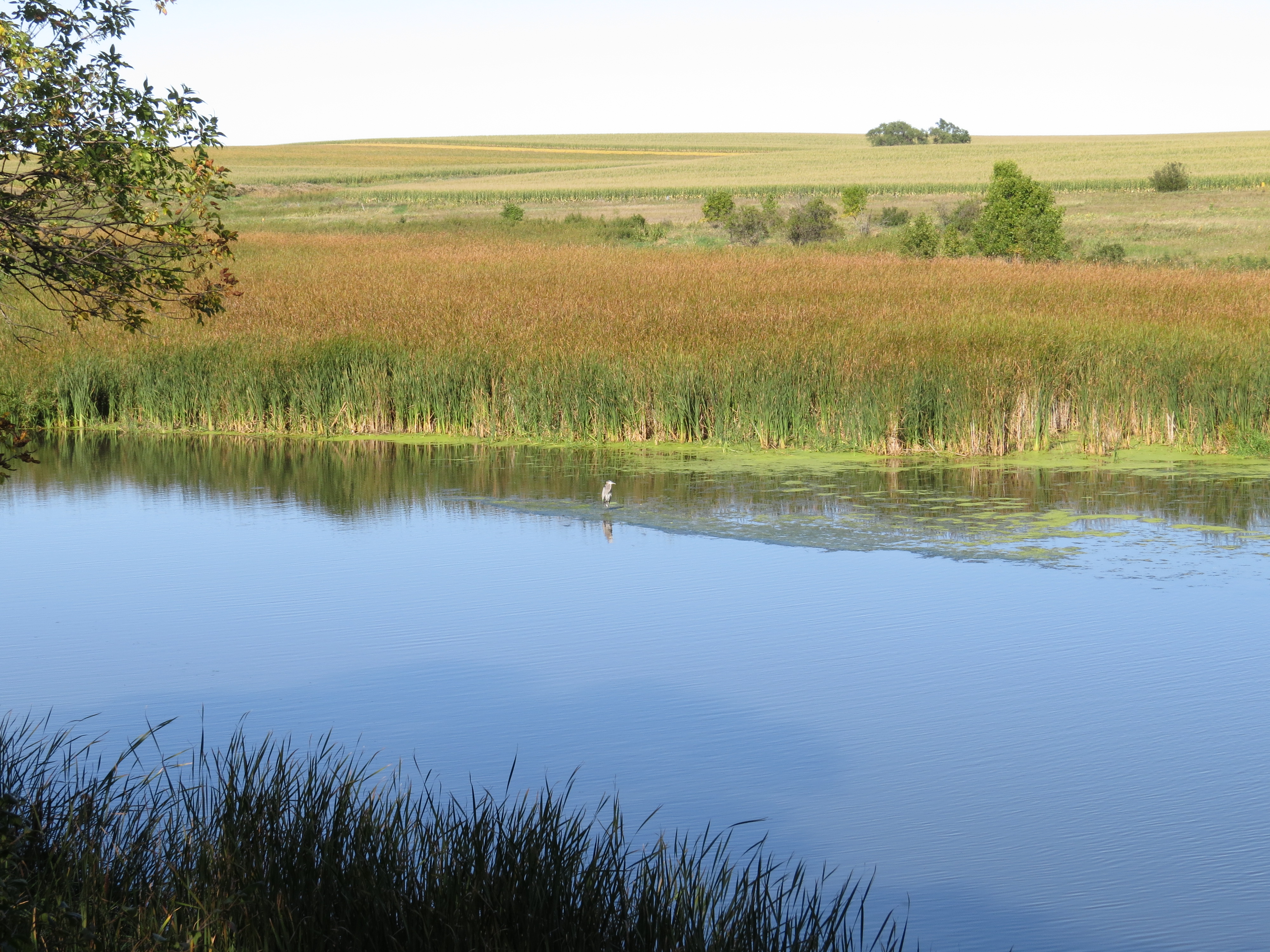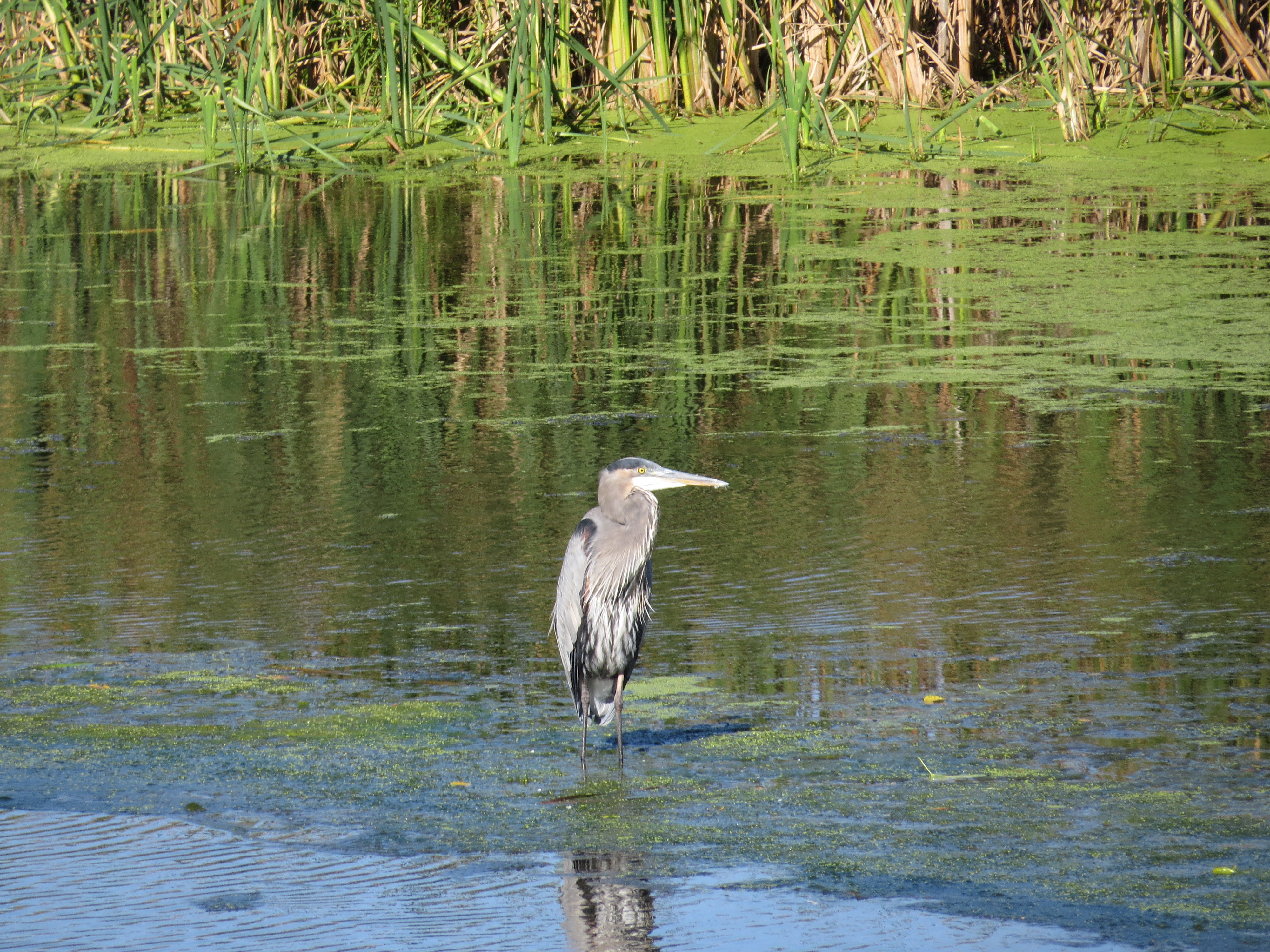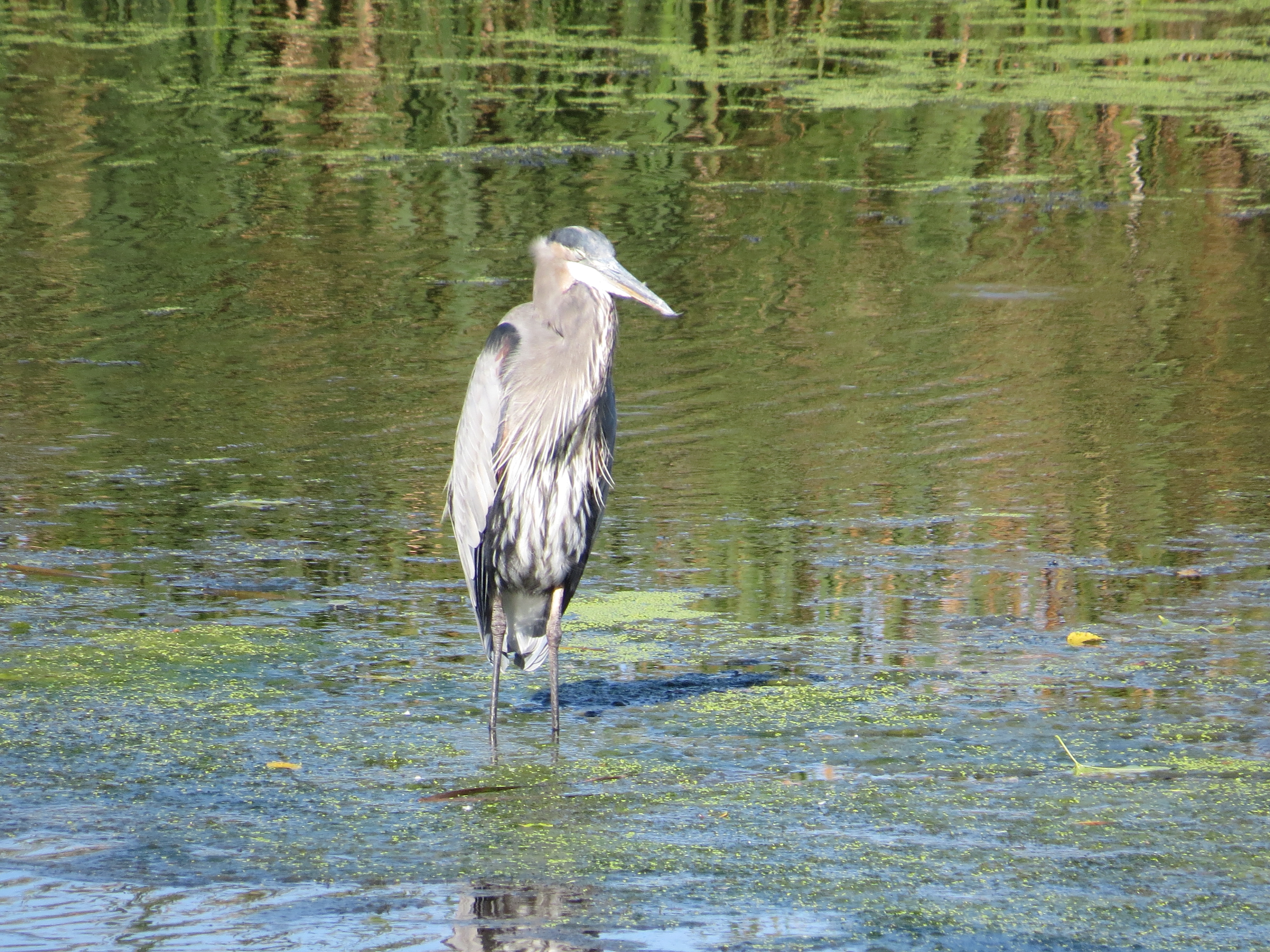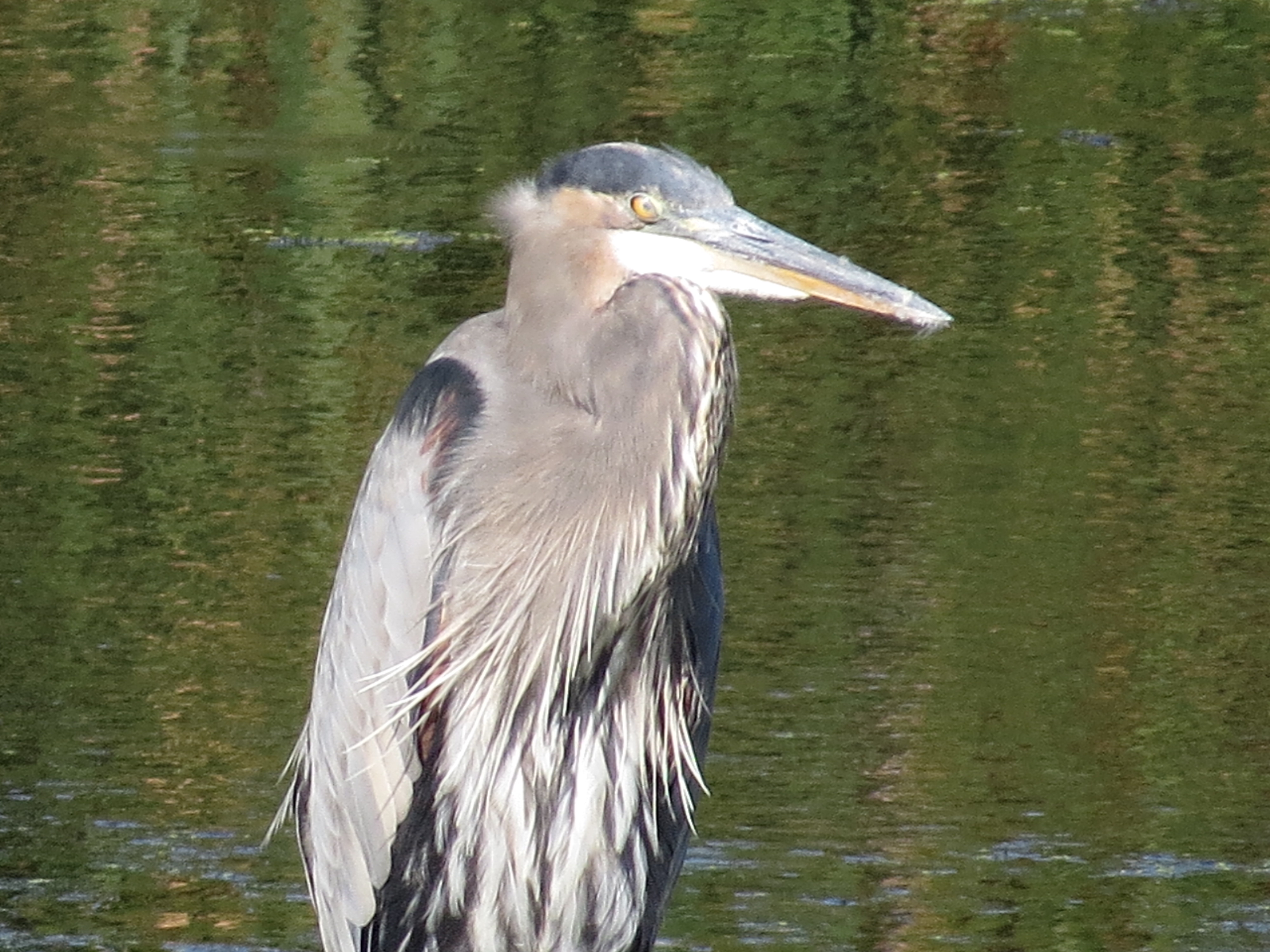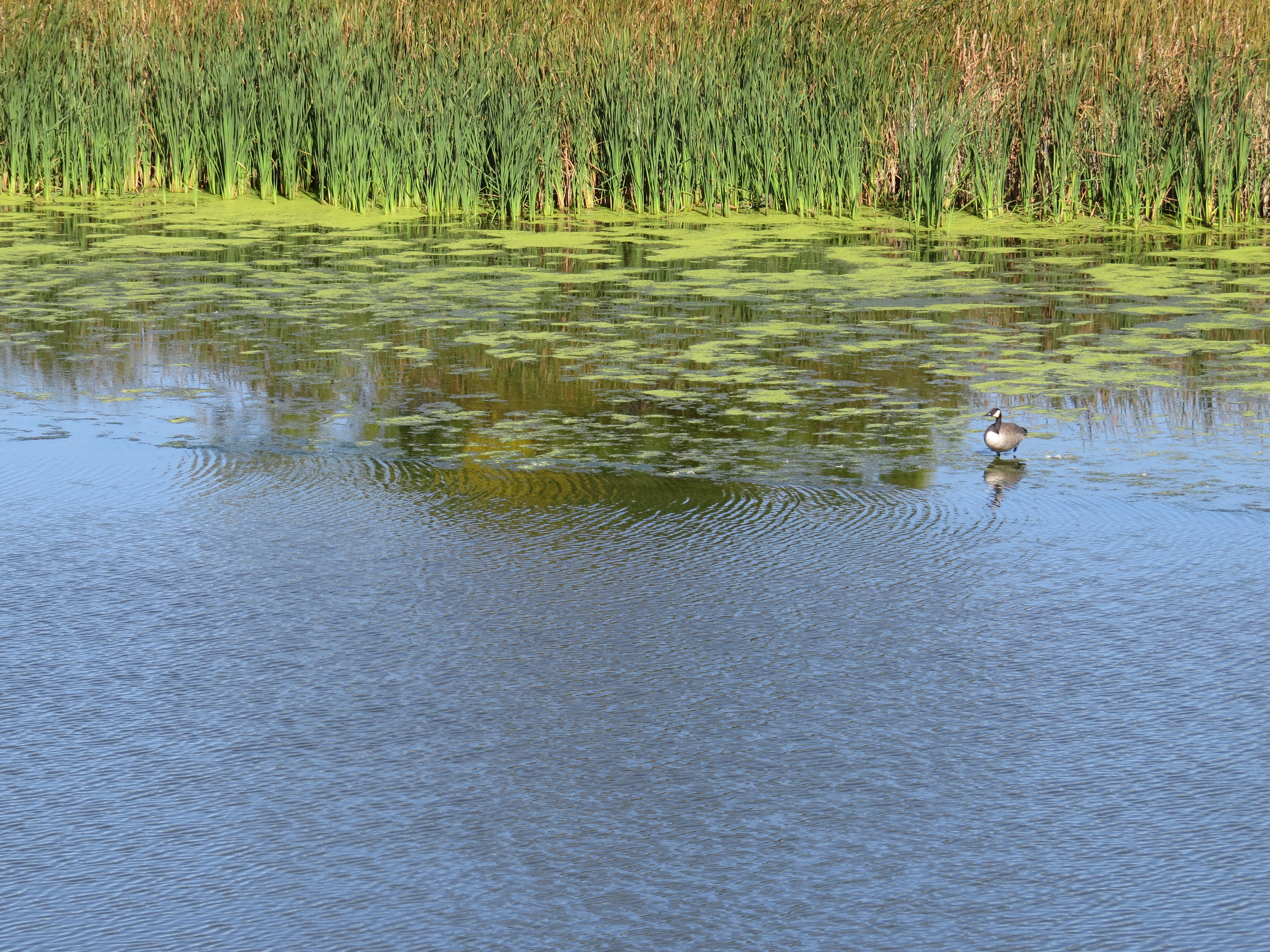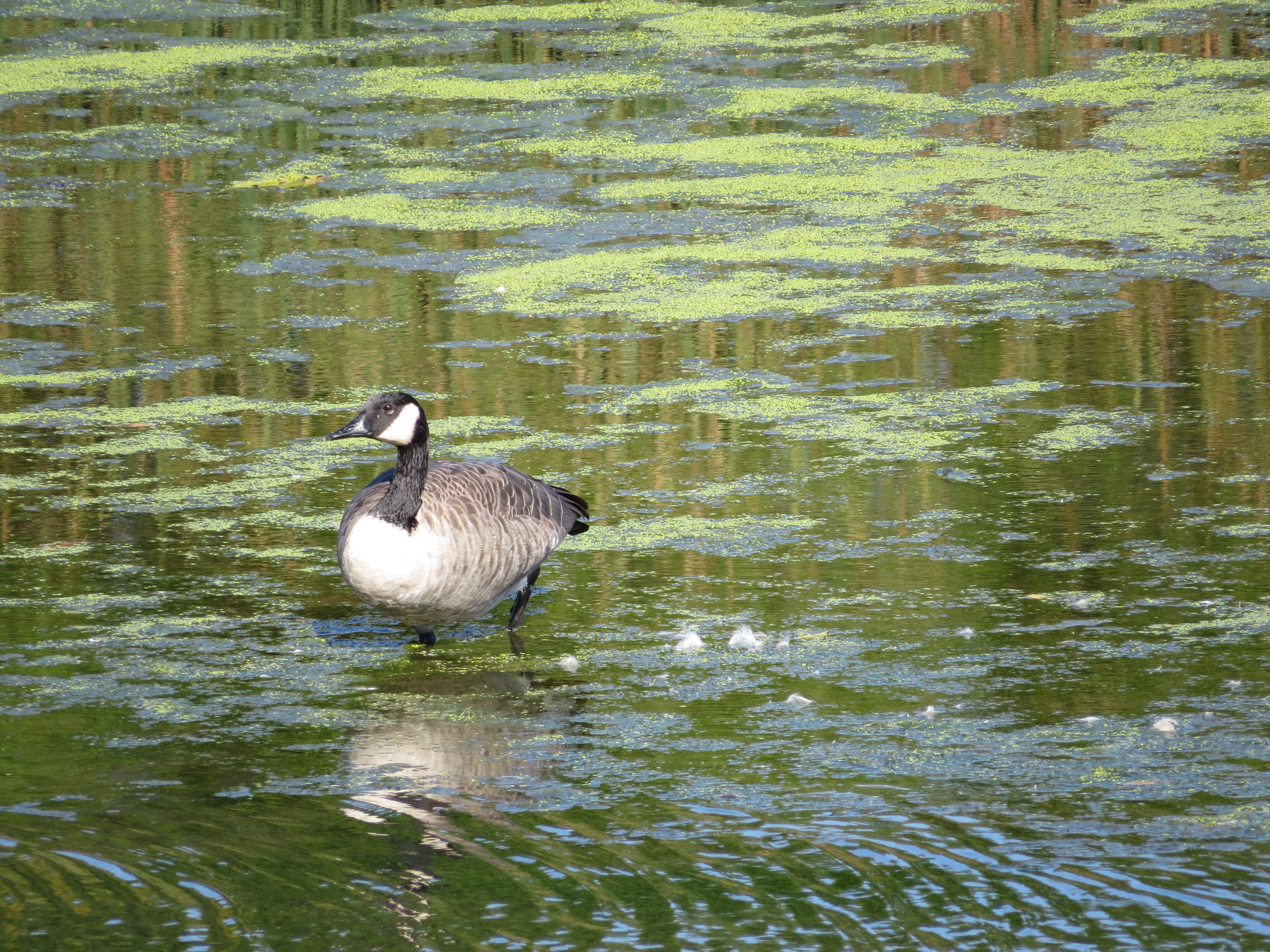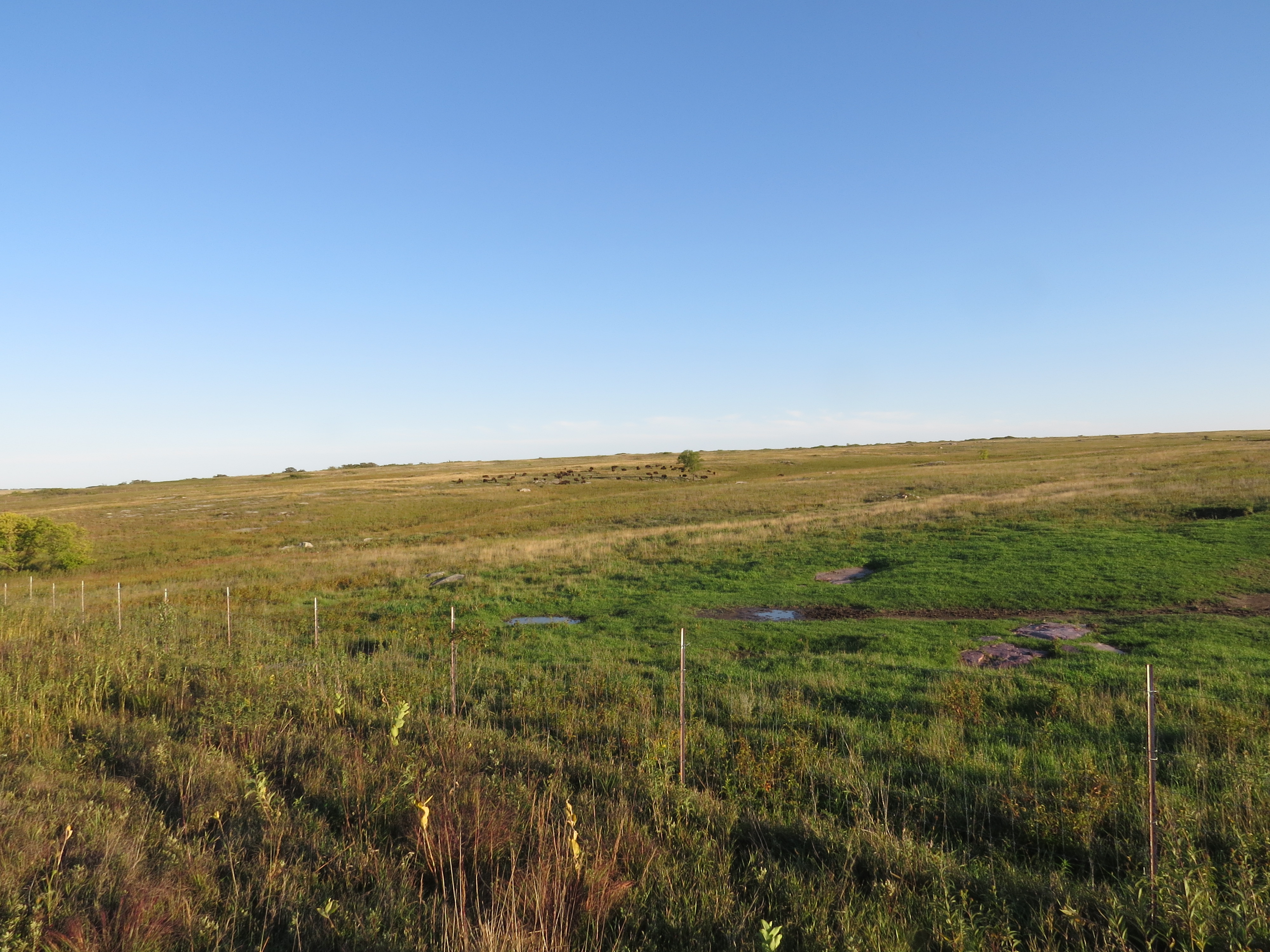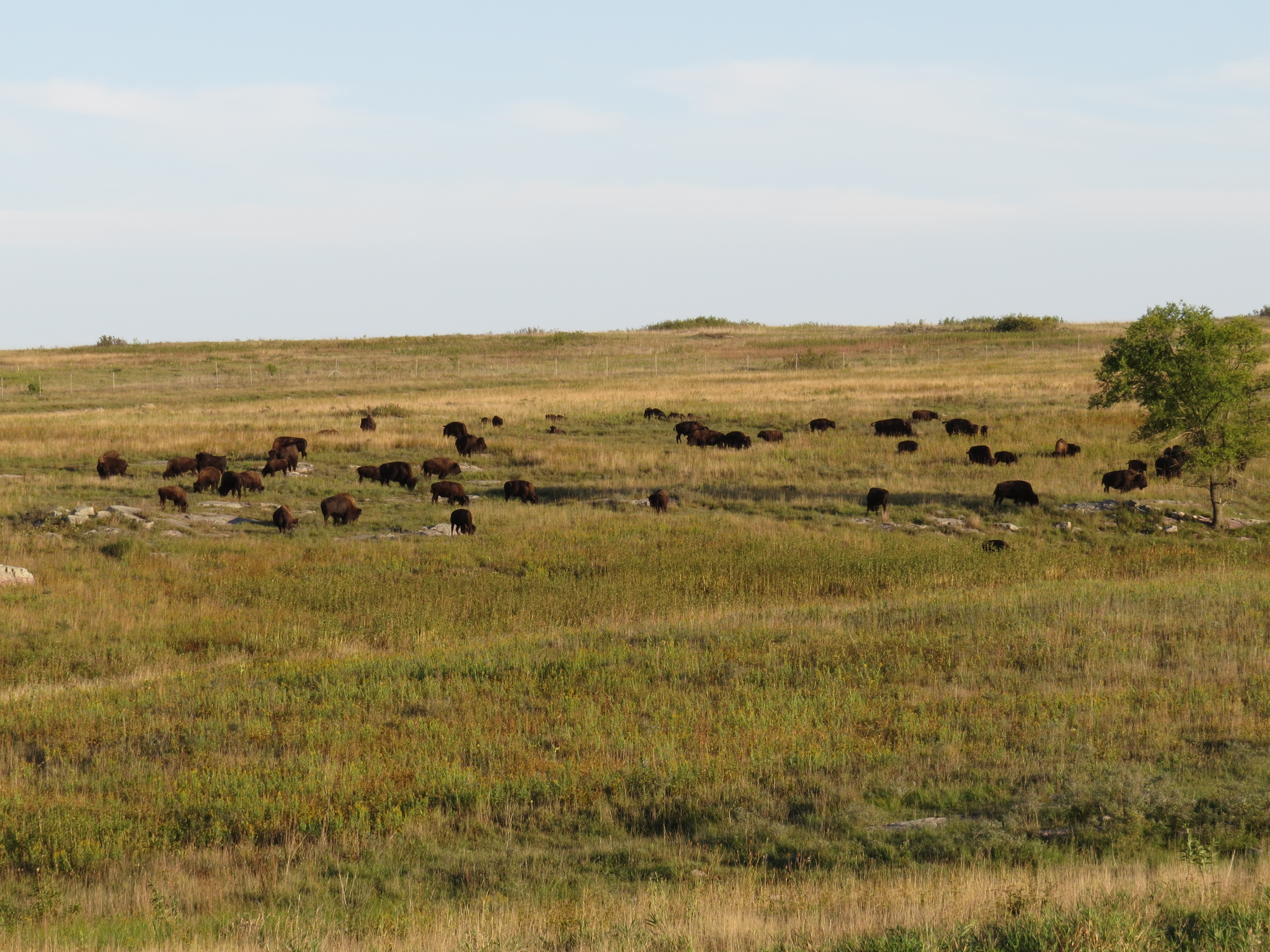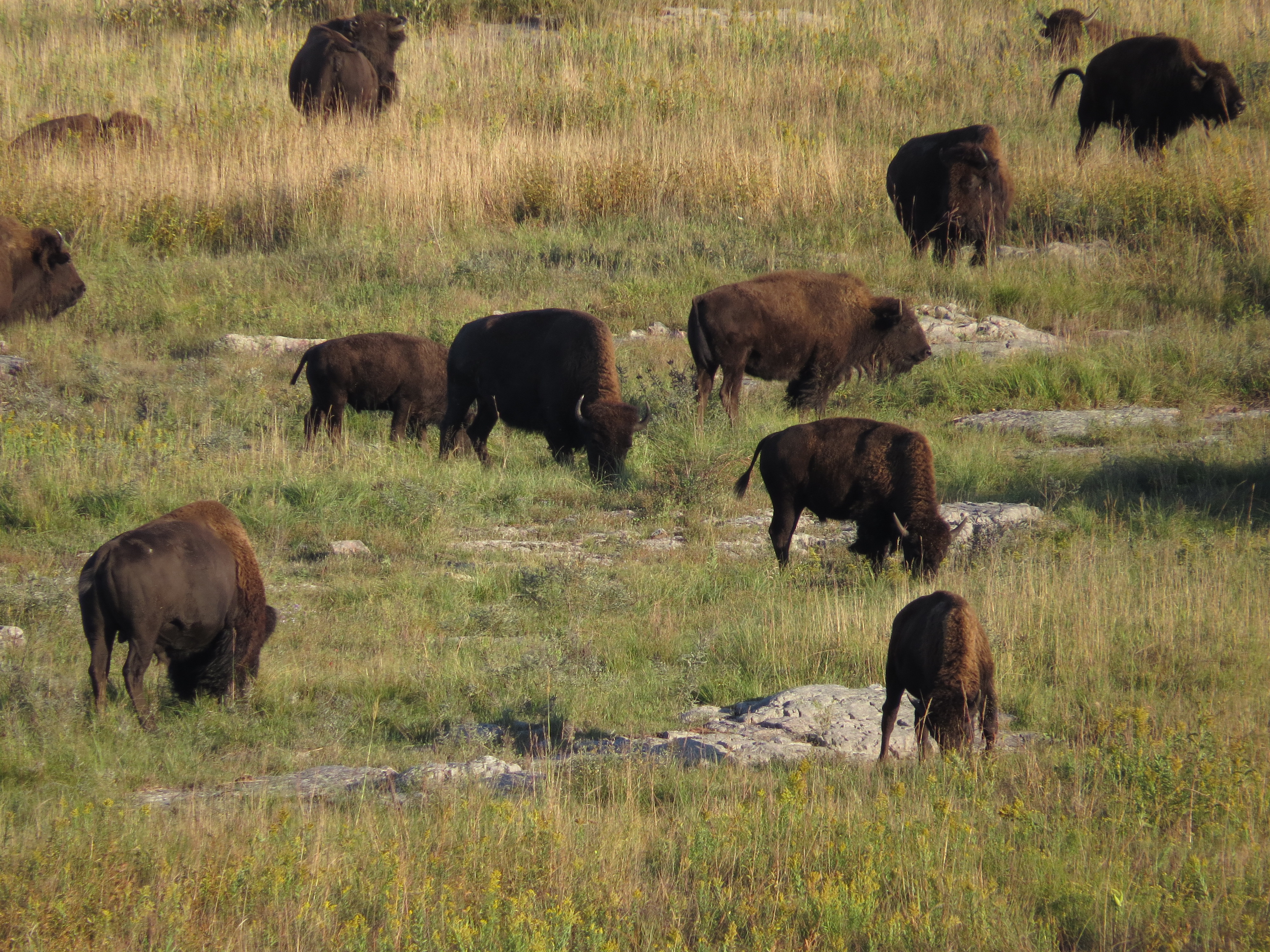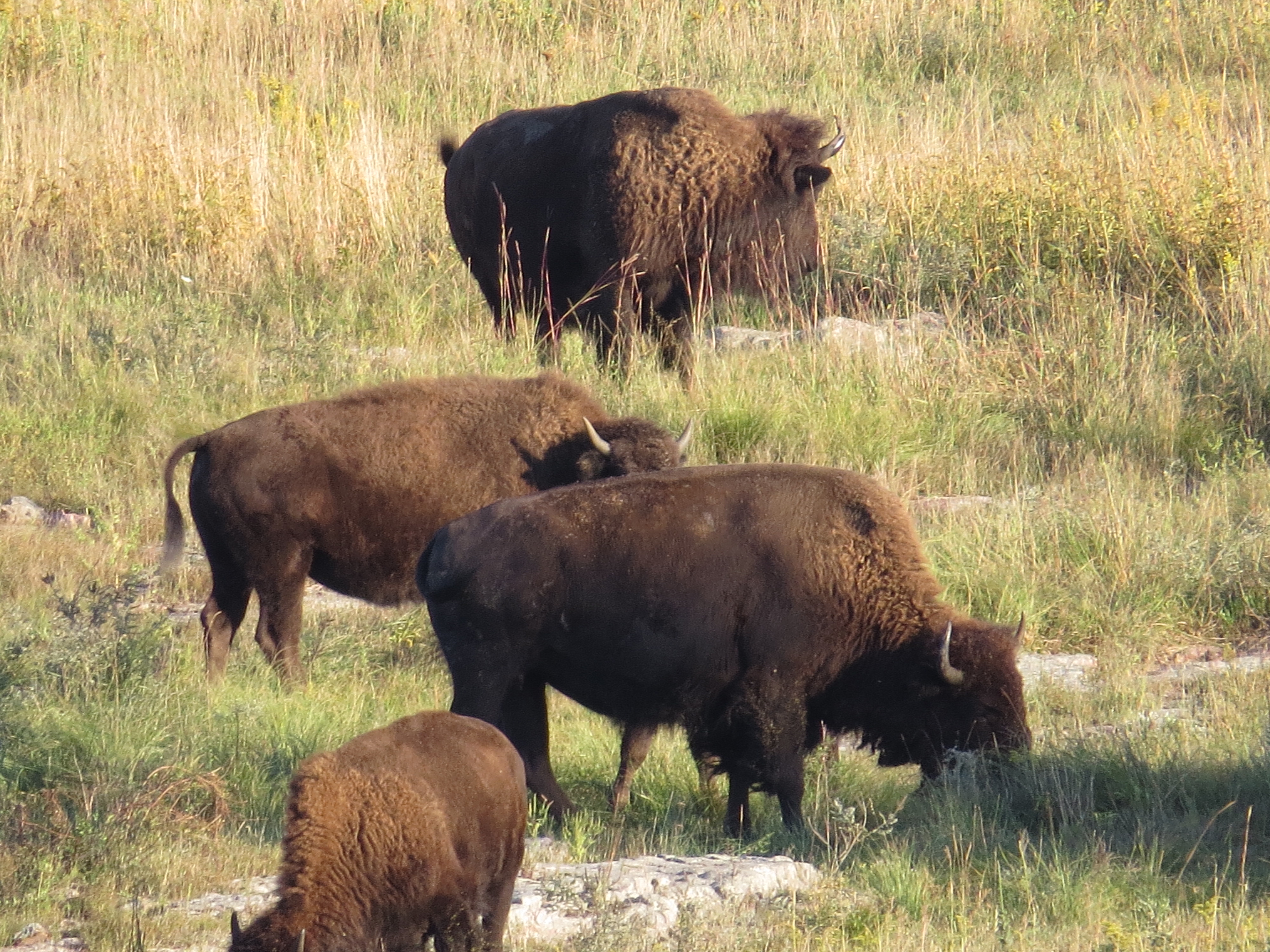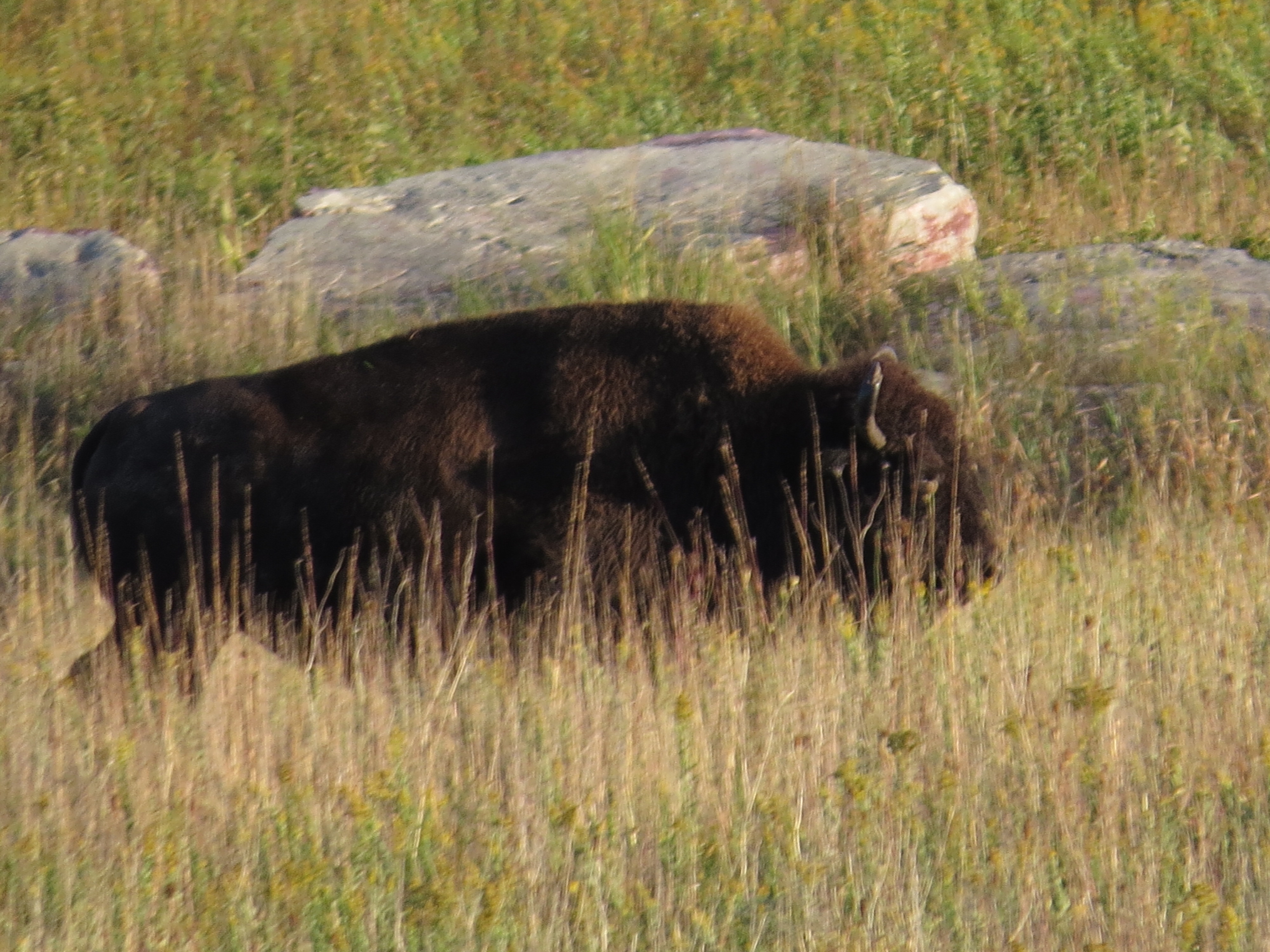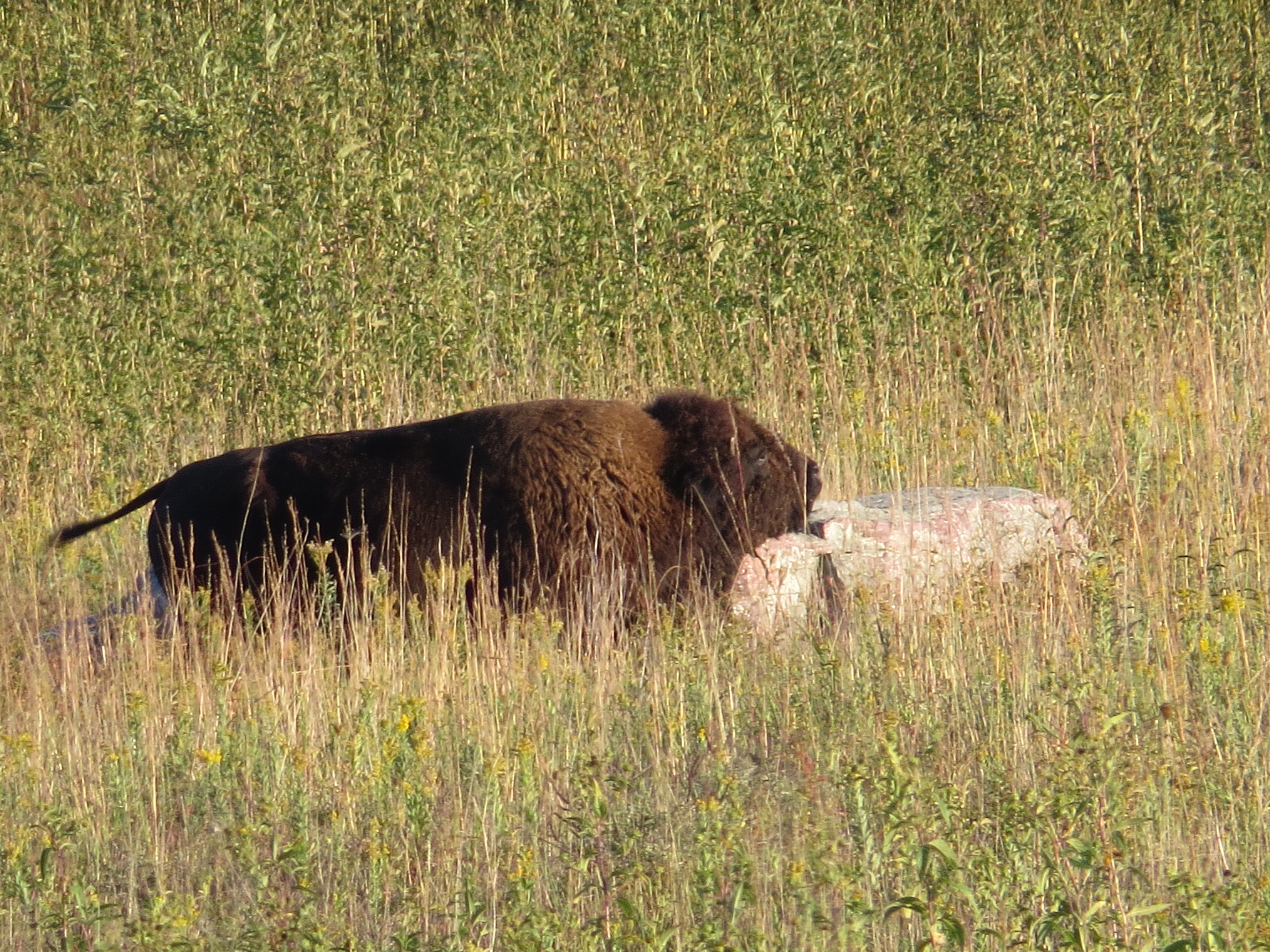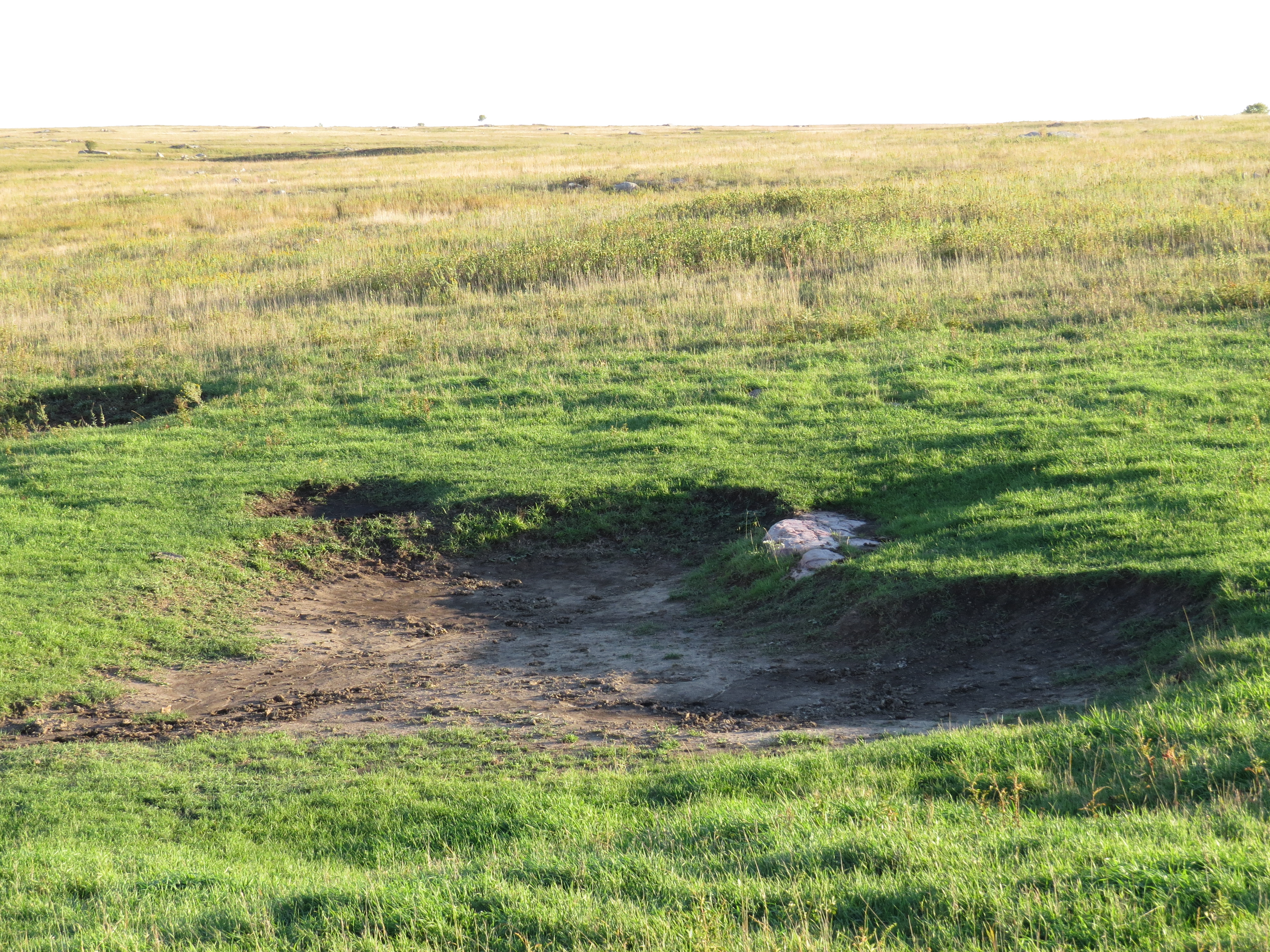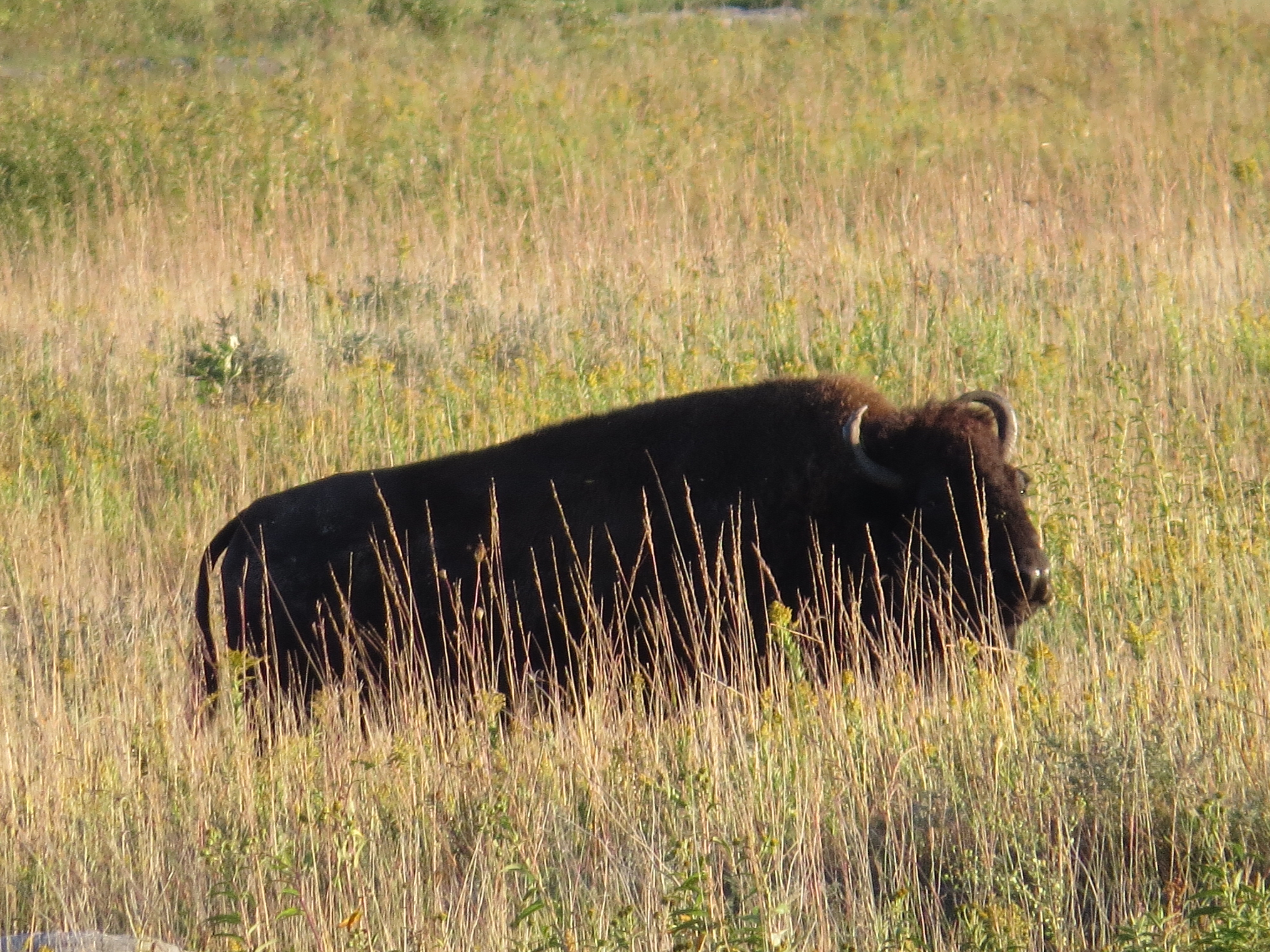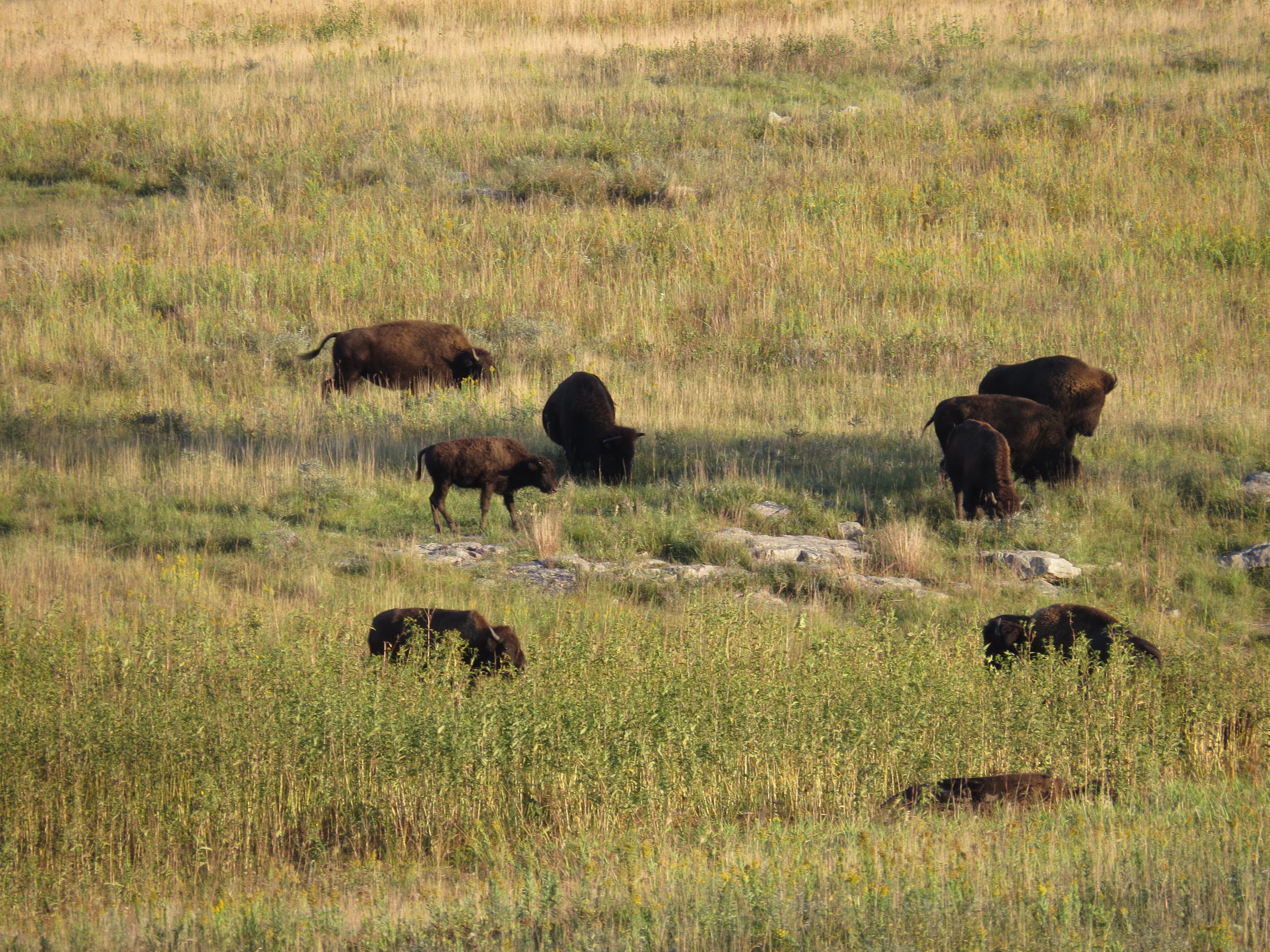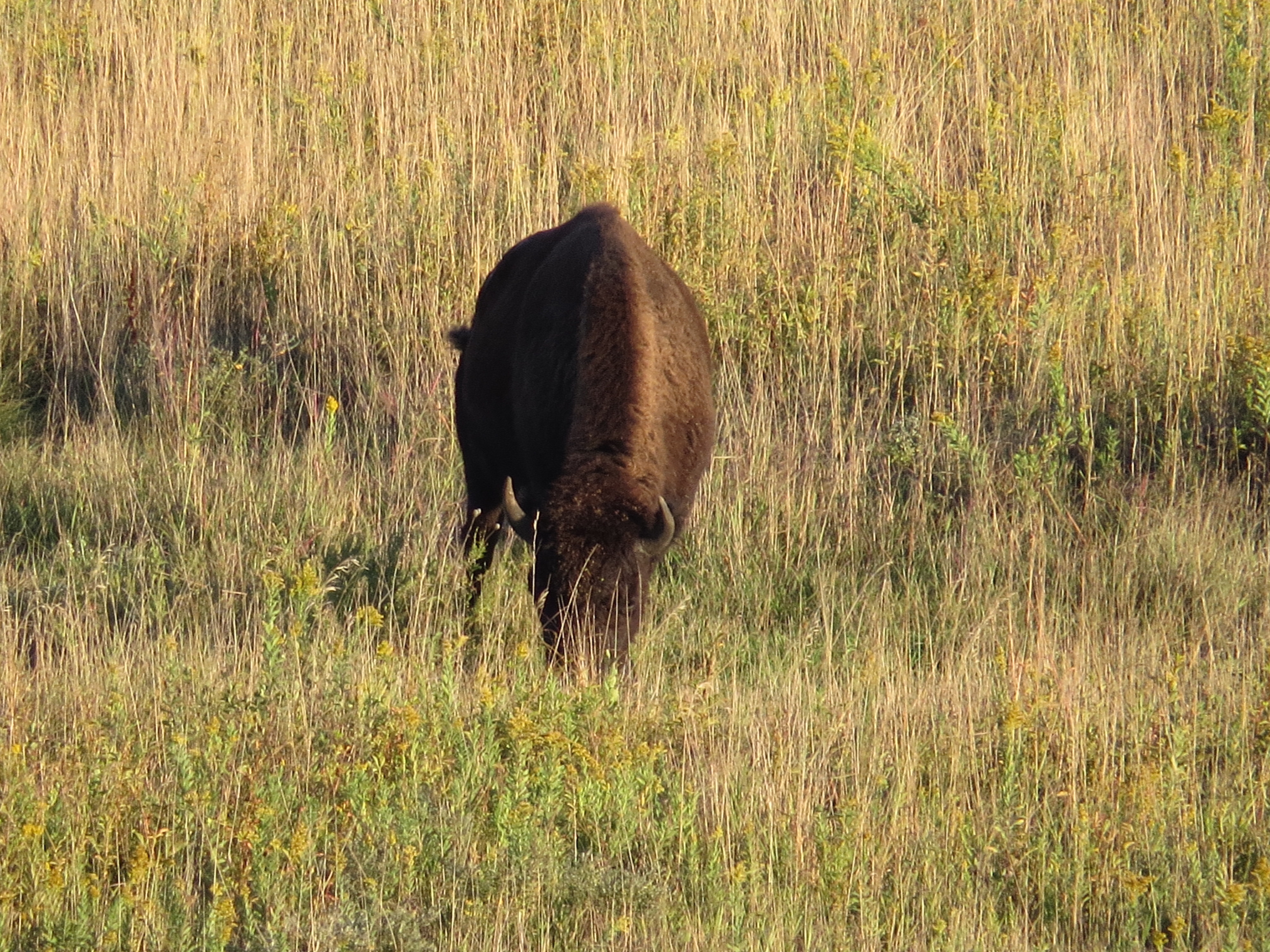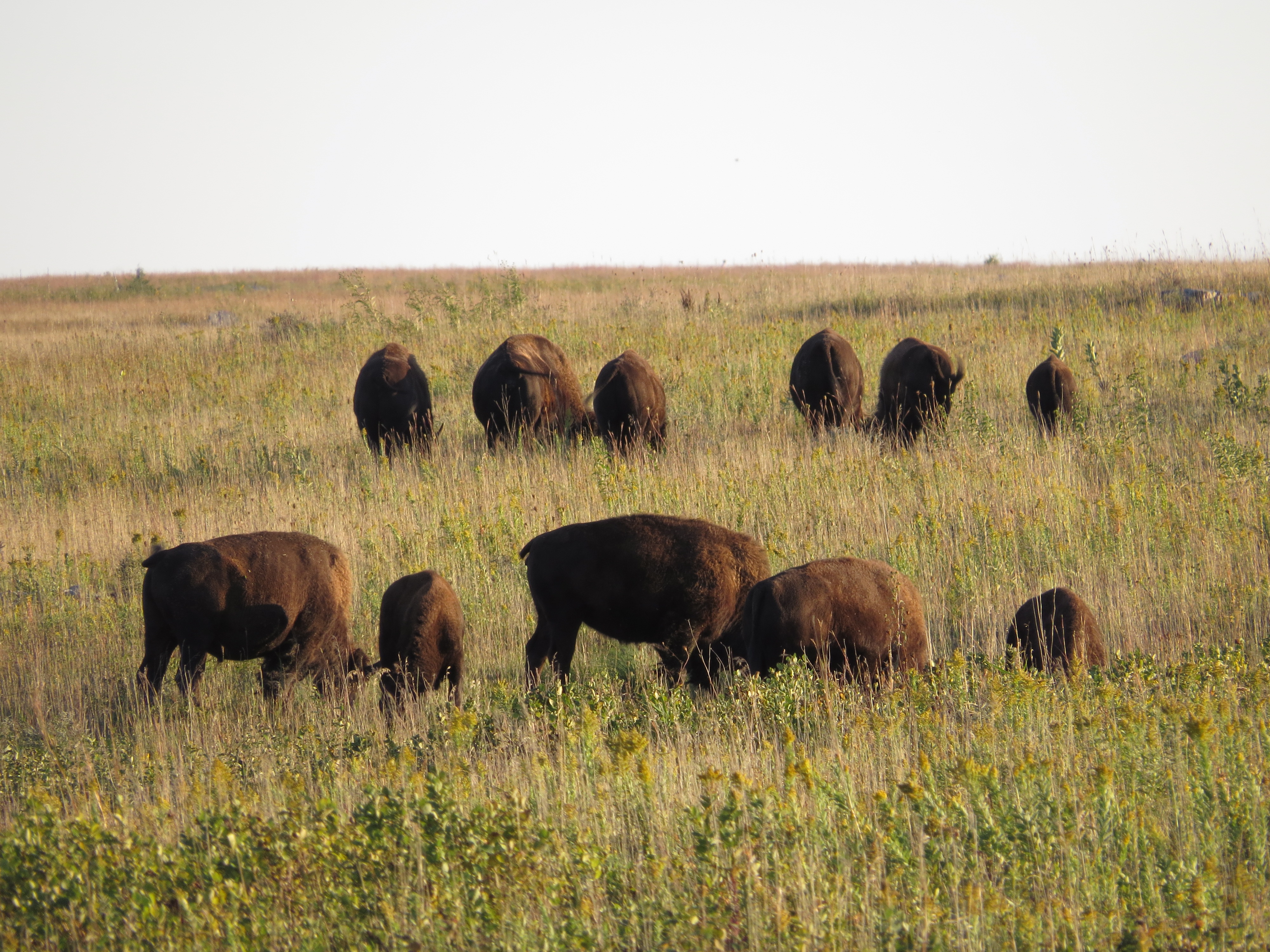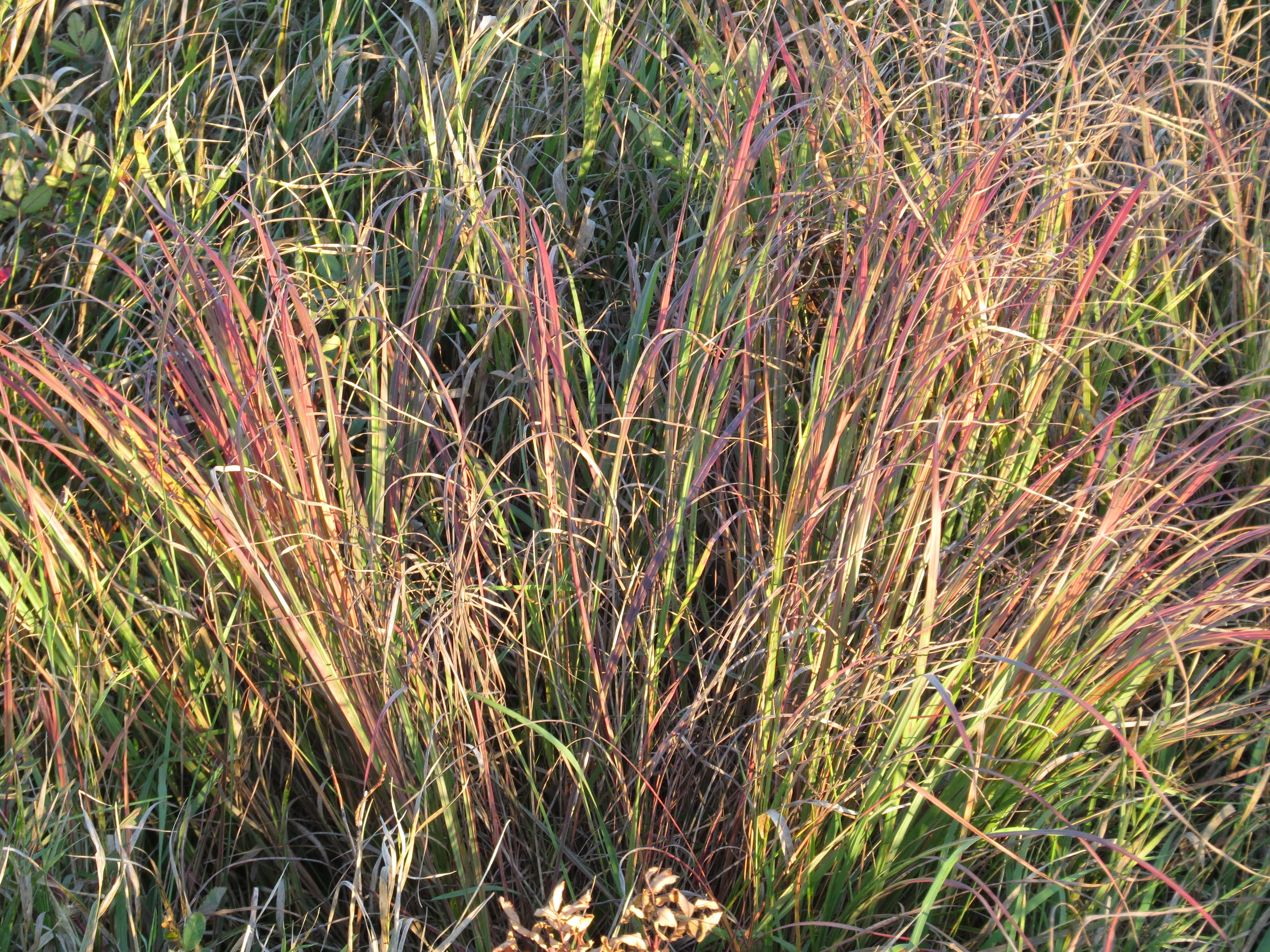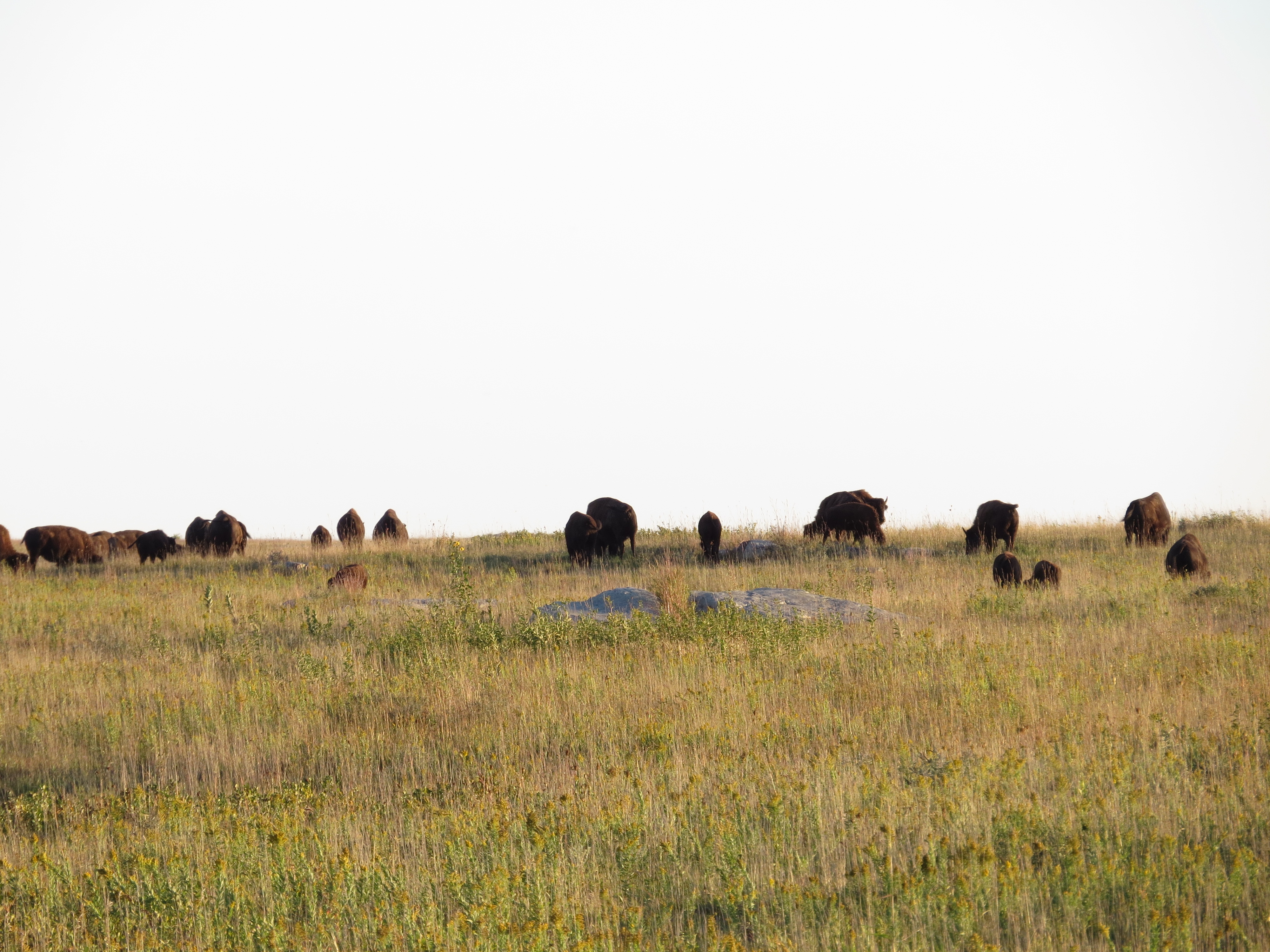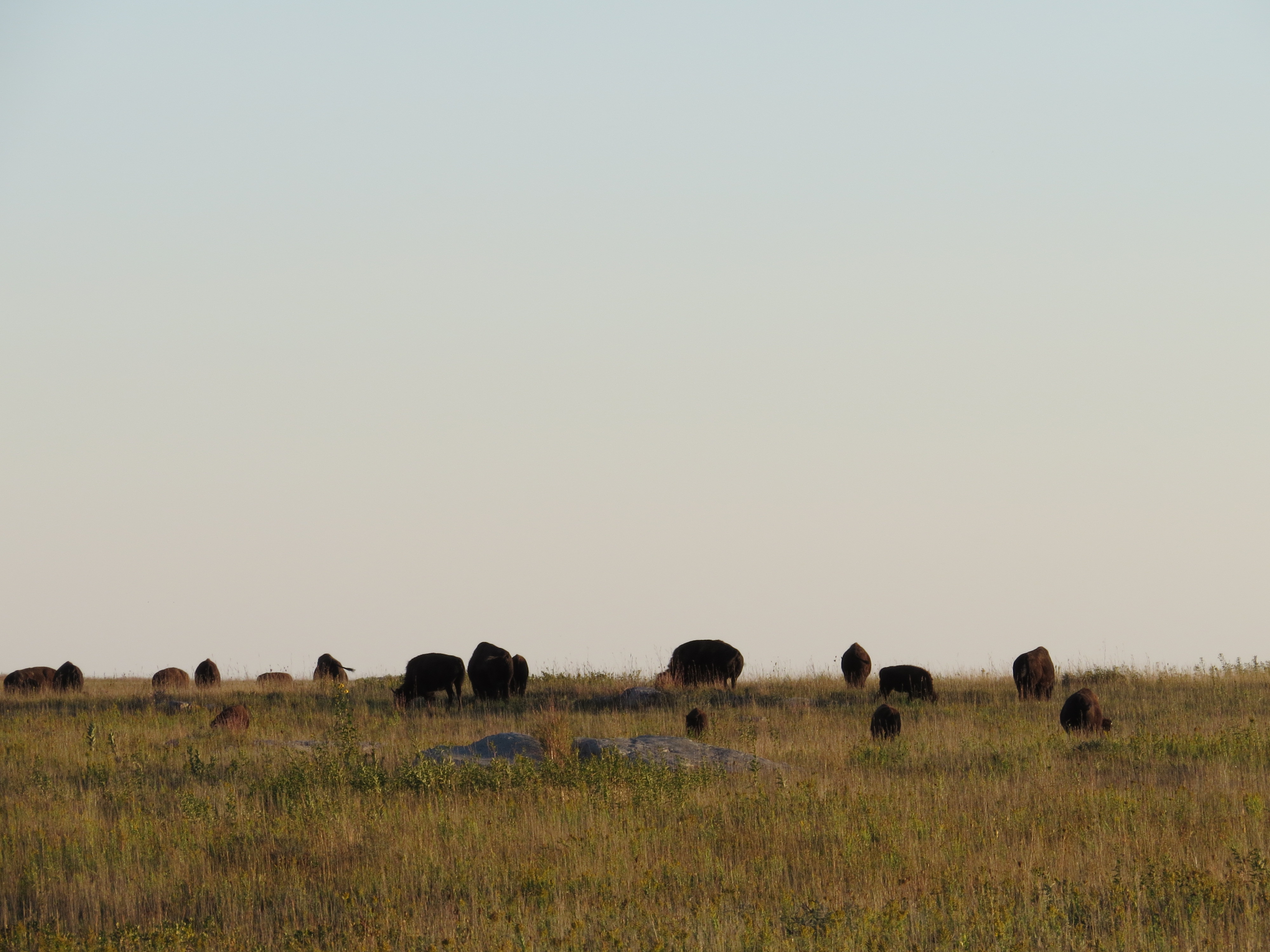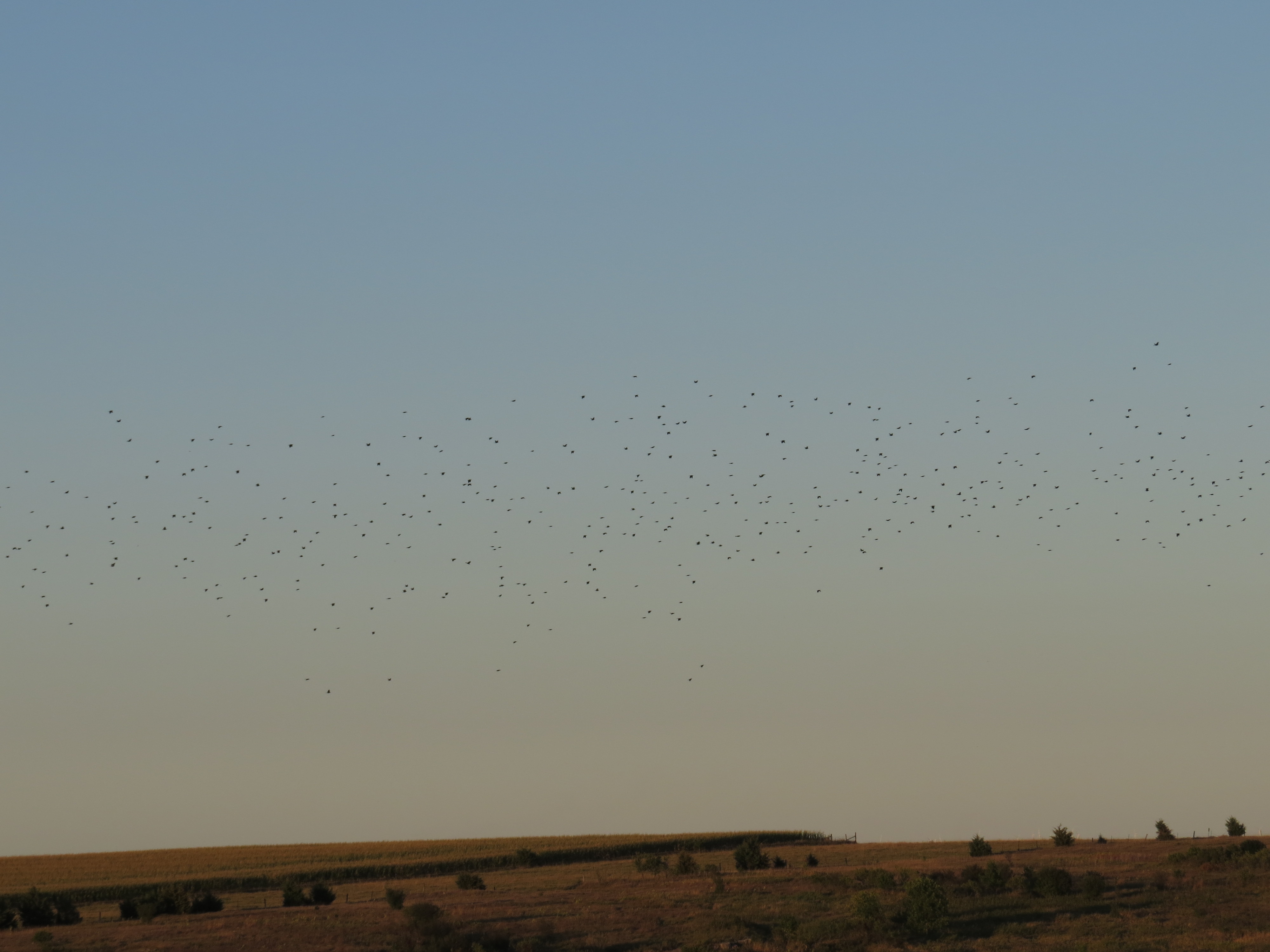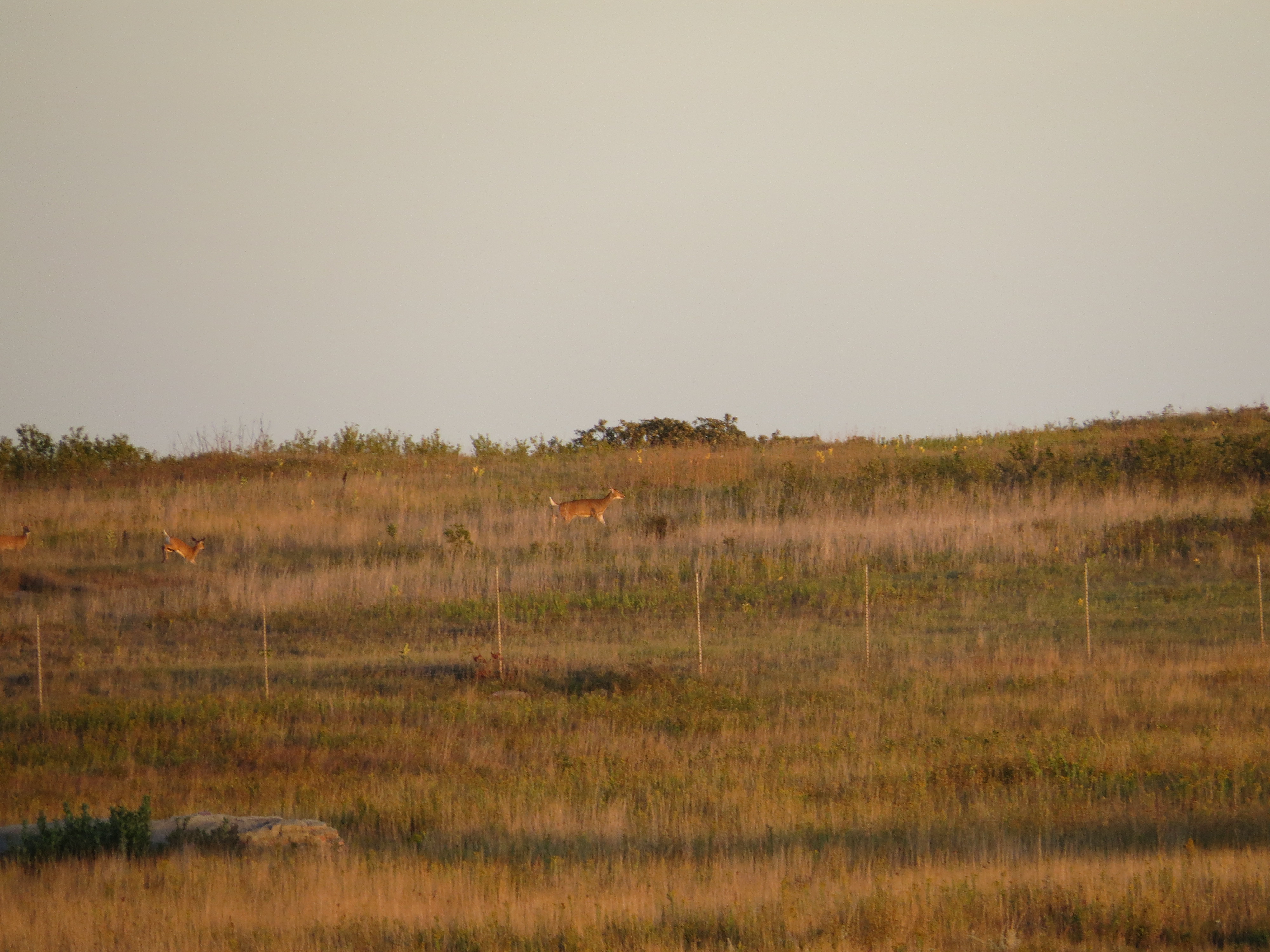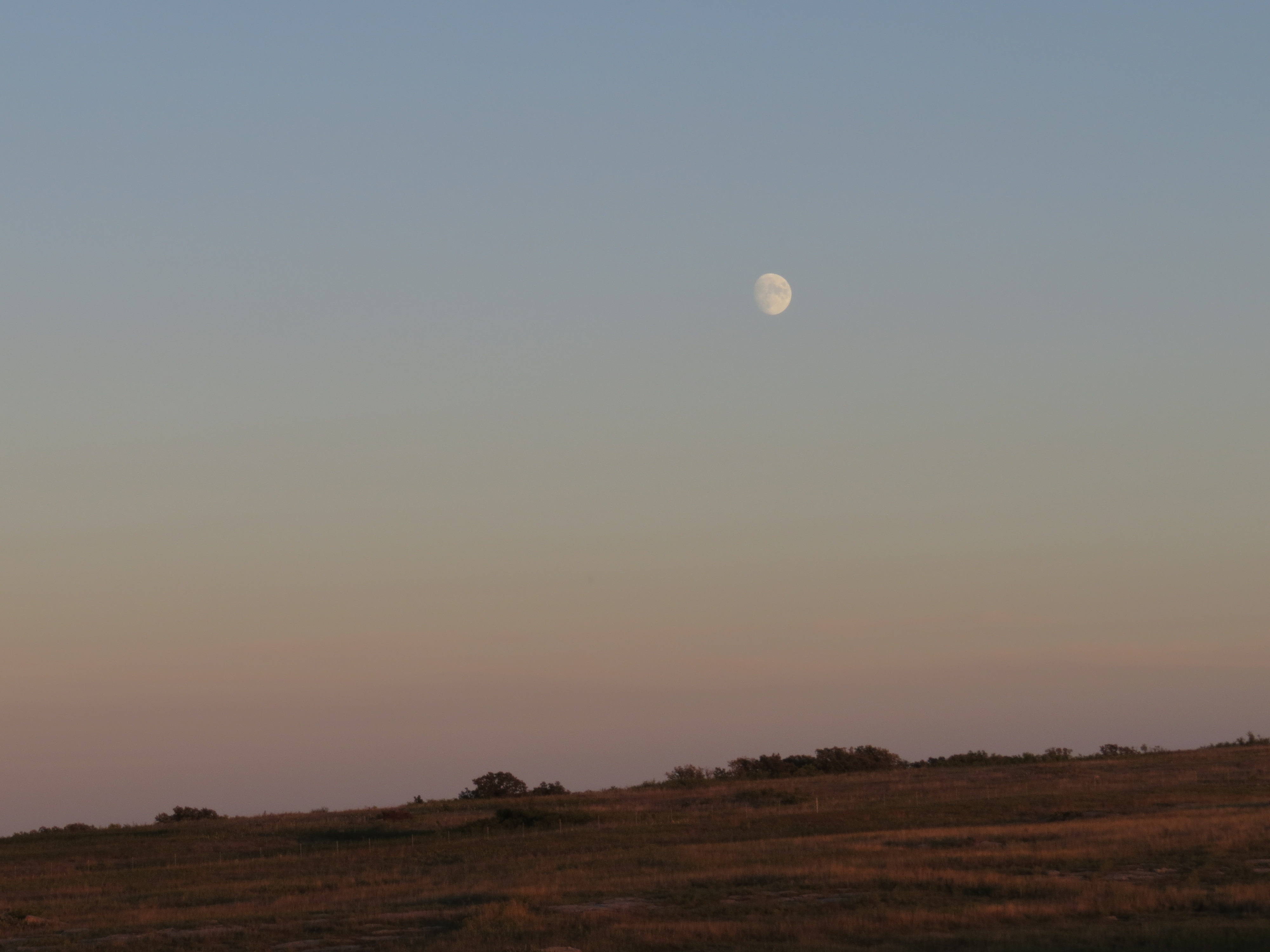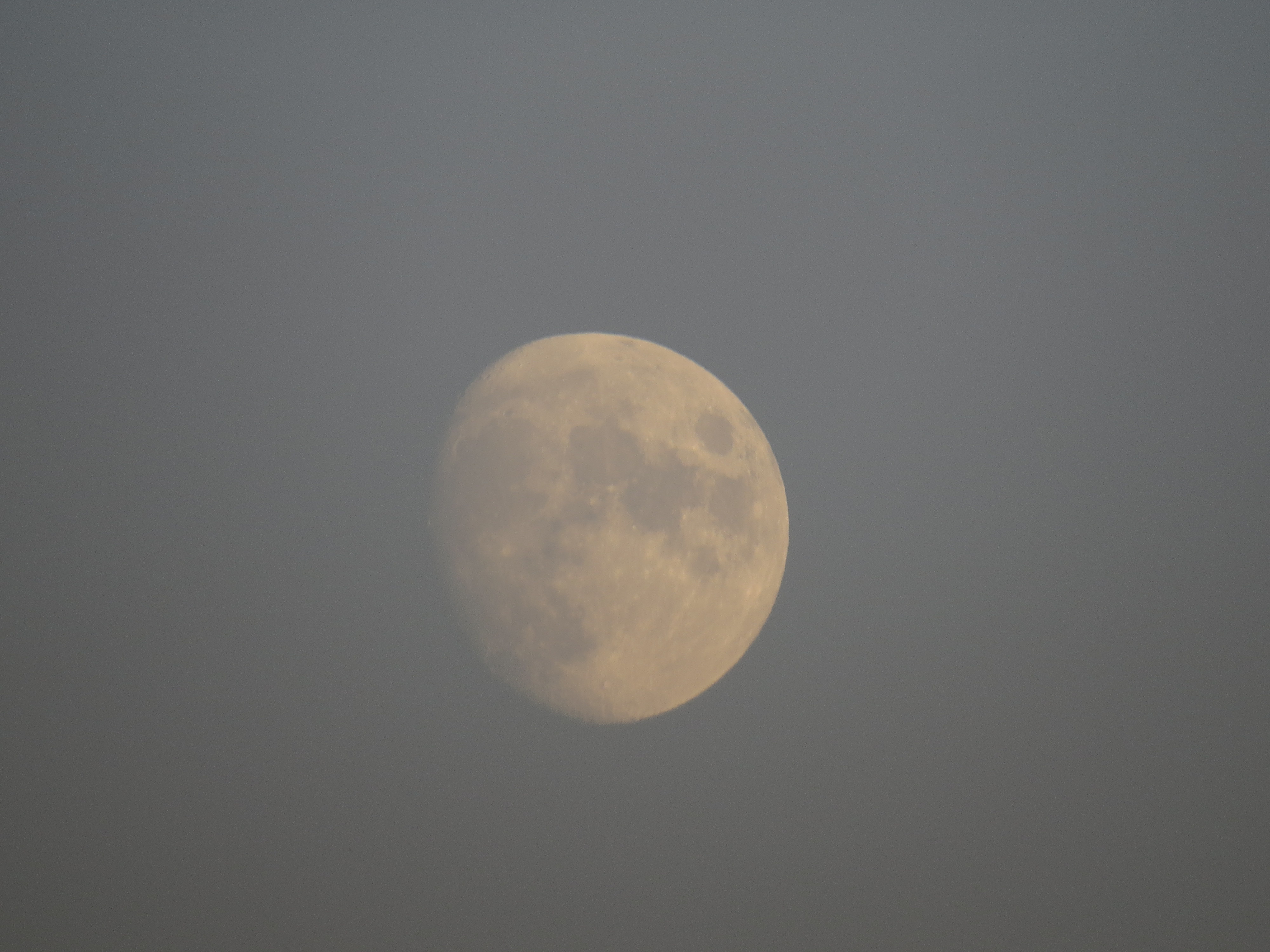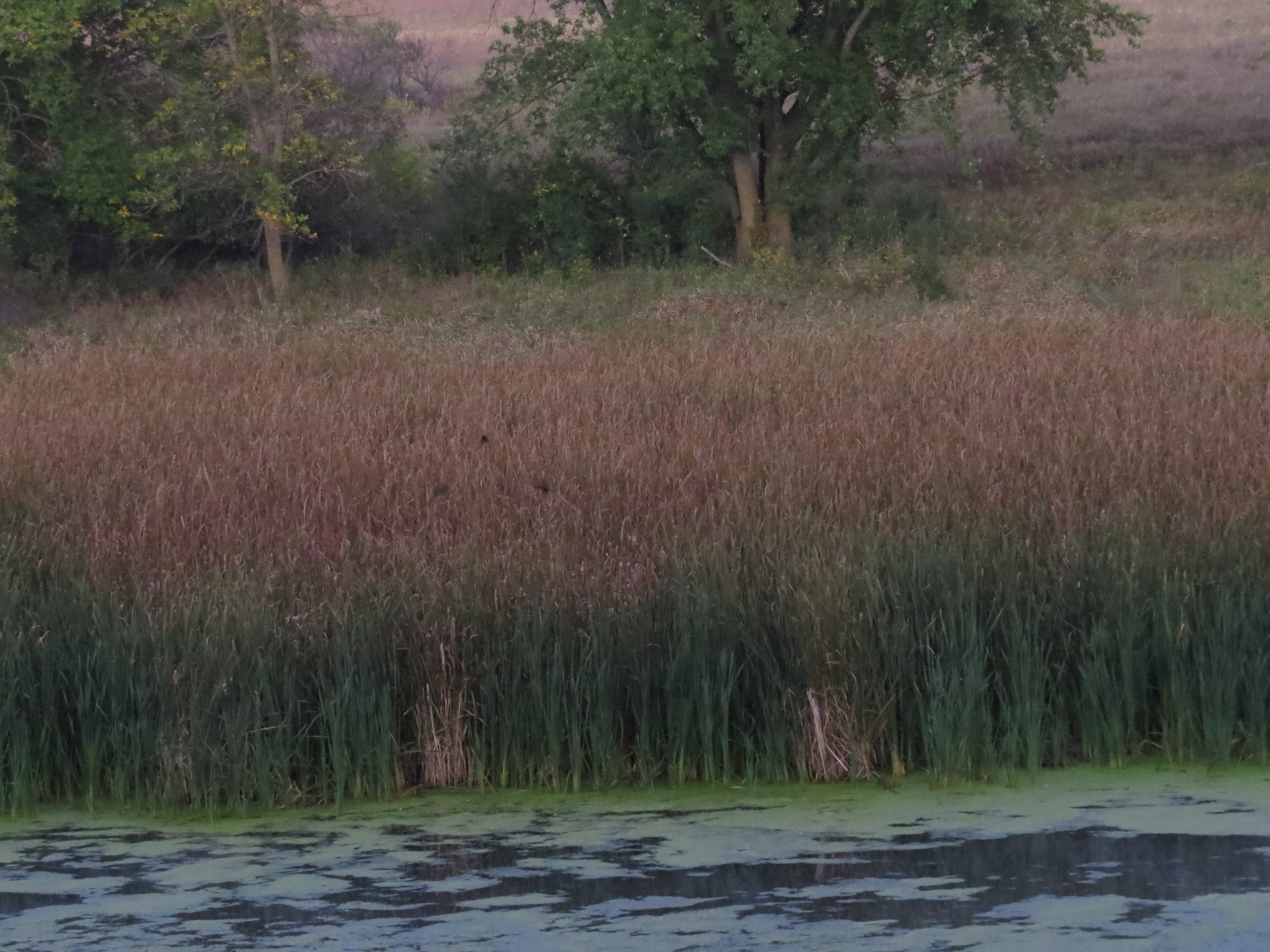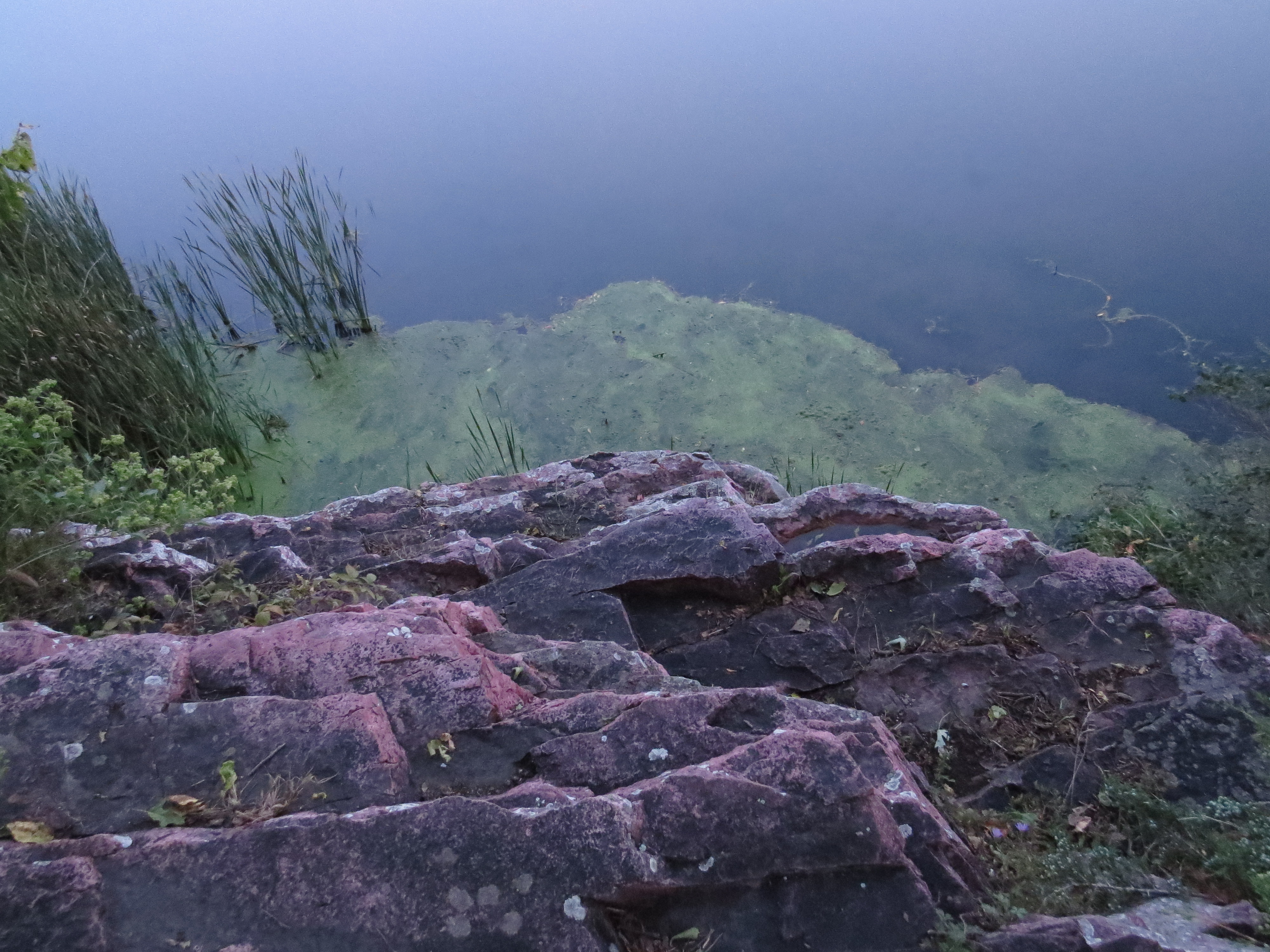I think we all have a natural affinity to the earth or water, either through our long lines of ancestral DNA or the environment or most likely, both. We are the products of nature and nurture. Water is beautiful to me and intriguing. I love the aqua reflections and ripples, cascades and still pools. I’m also not very comfortable in bodies of water like those deep lakes in the BWCA—I carry some fear and an extra dose of caution. But the land…that’s a different story. I feel at home on the land. It is my home.
We camped at Blue Mounds State Park with my Mom. Both her and my Dad came from farm families in eastern South Dakota. The land was their home, their livelihood, and the entity they interacted with on a daily basis. My parents farmed for a living for a short period of their married lives, but the connection to the land continued and was passed down from their parents through them to their children.
We awoke when the lake behind us was waking up—the Great Blue Heron was fishing for his breakfast, stalking the wetland and darting his long bill into the water, then stretching his neck to let the fish slide down his lengthy gullet. The sun popped up over the horizon, coloring the dawn sky with the same hues as the quartzite rock that lay in the ground around us. A pair of geese landed on the water, their ripples separate, then merged. And the mega-chorus of blackbirds lifted from the cattails into the aeris.
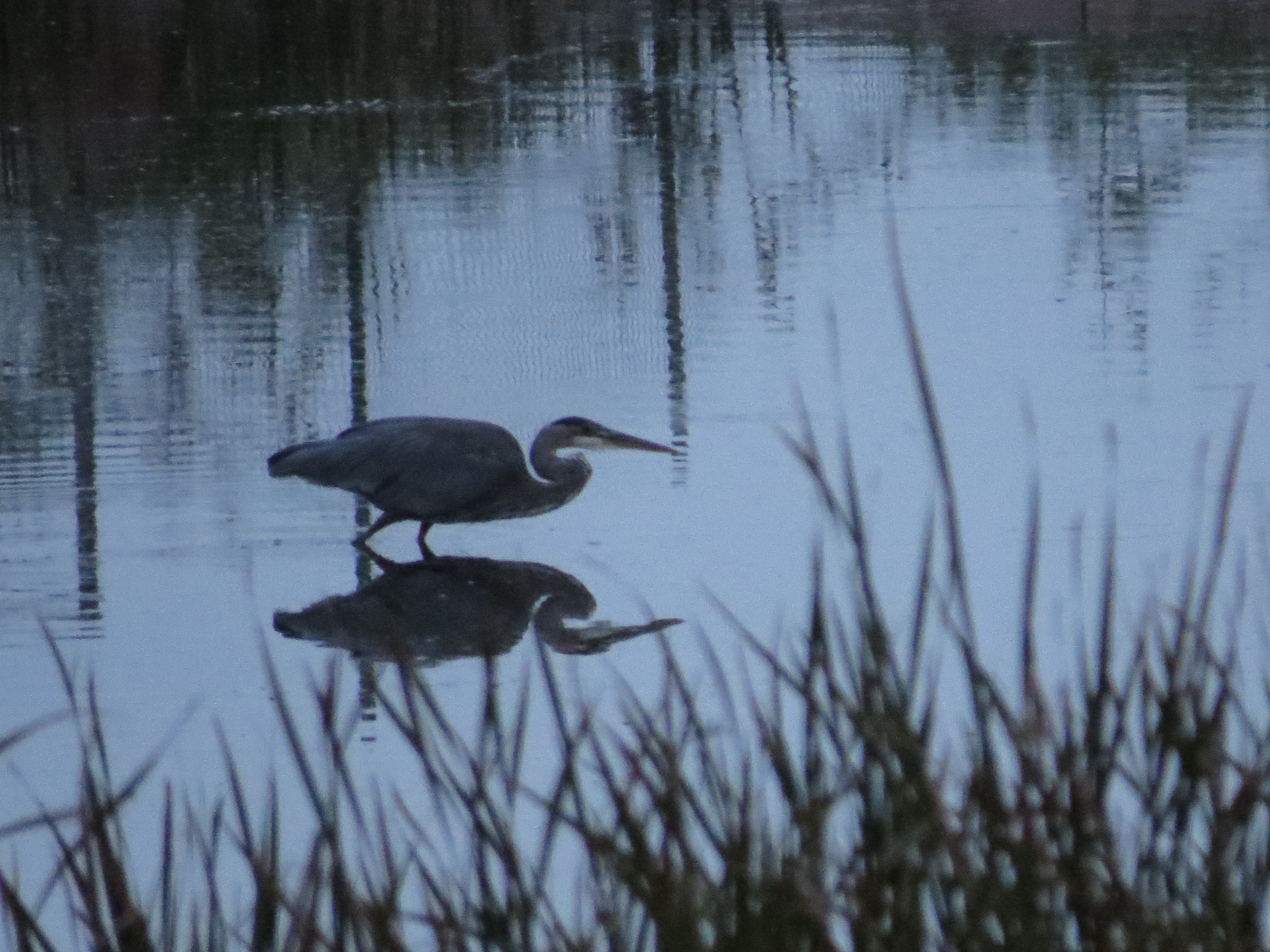
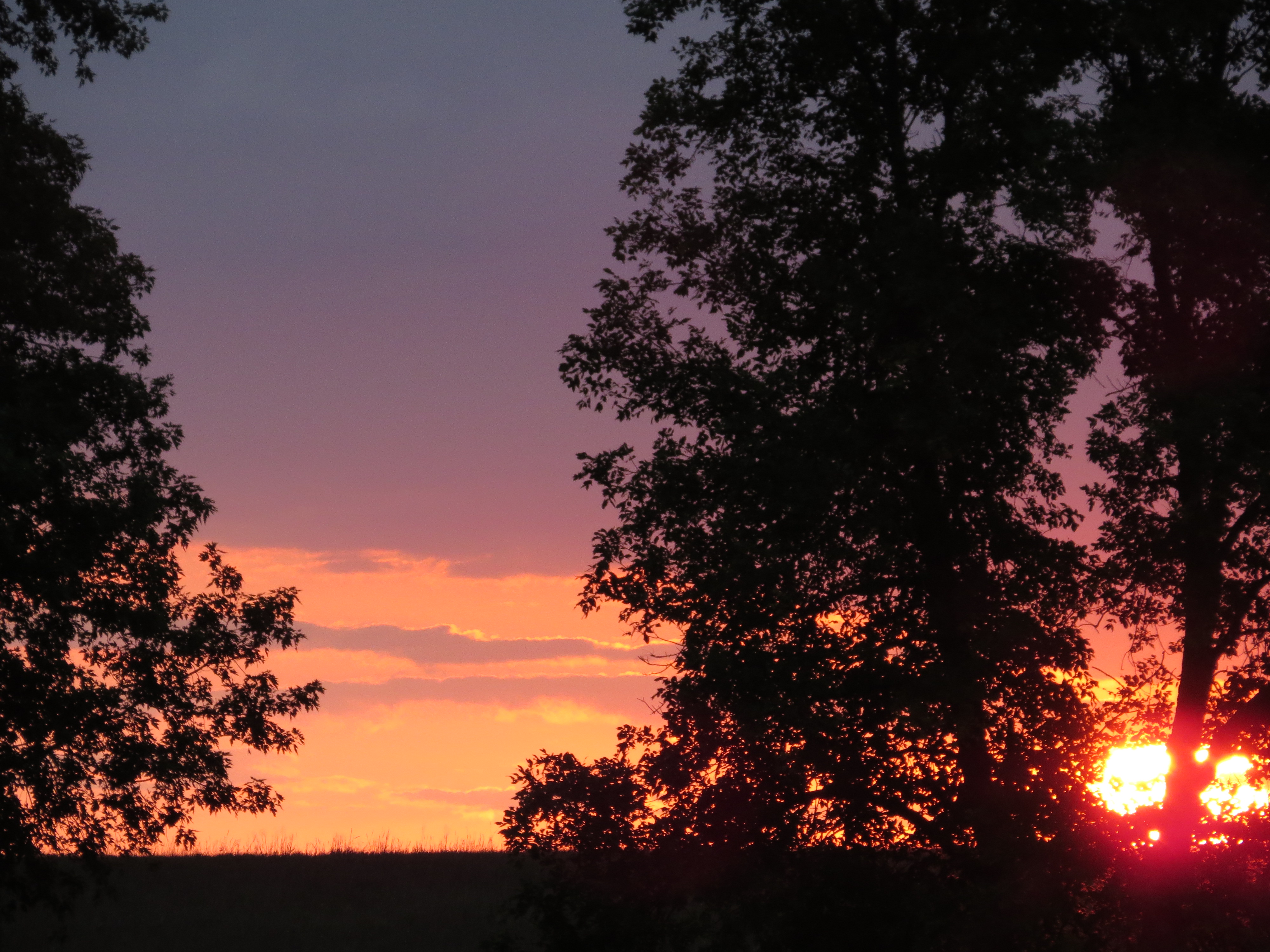
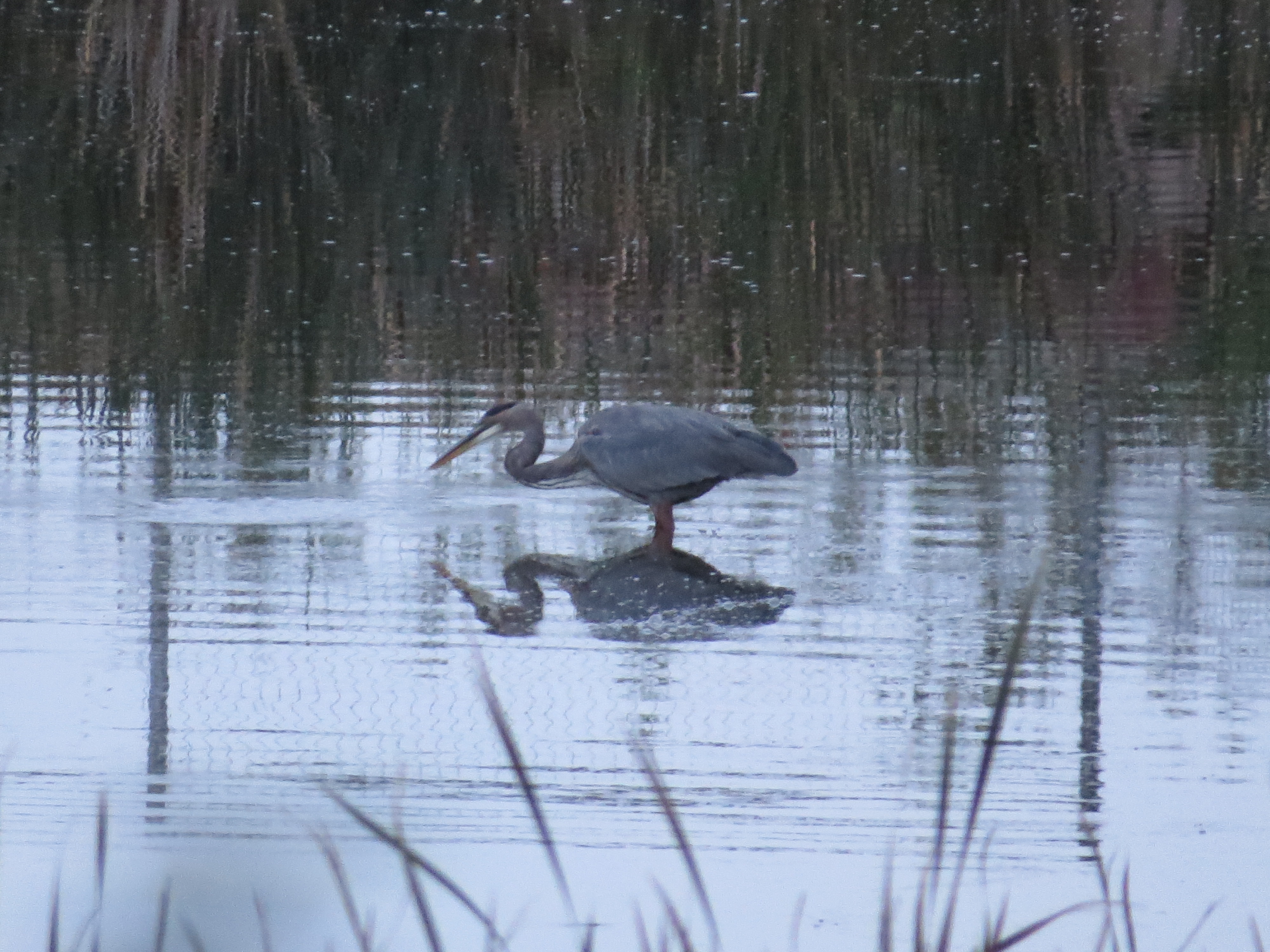
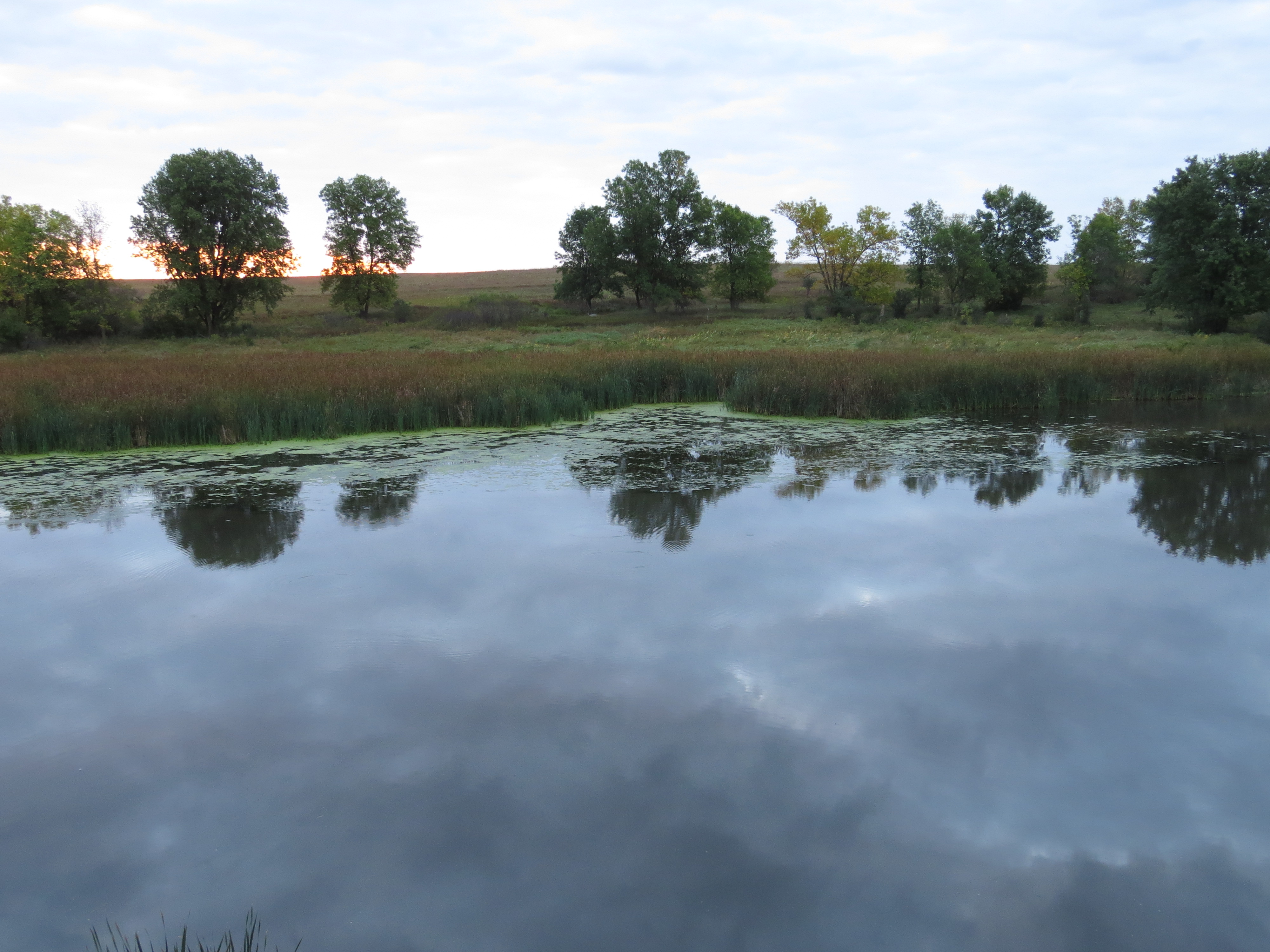
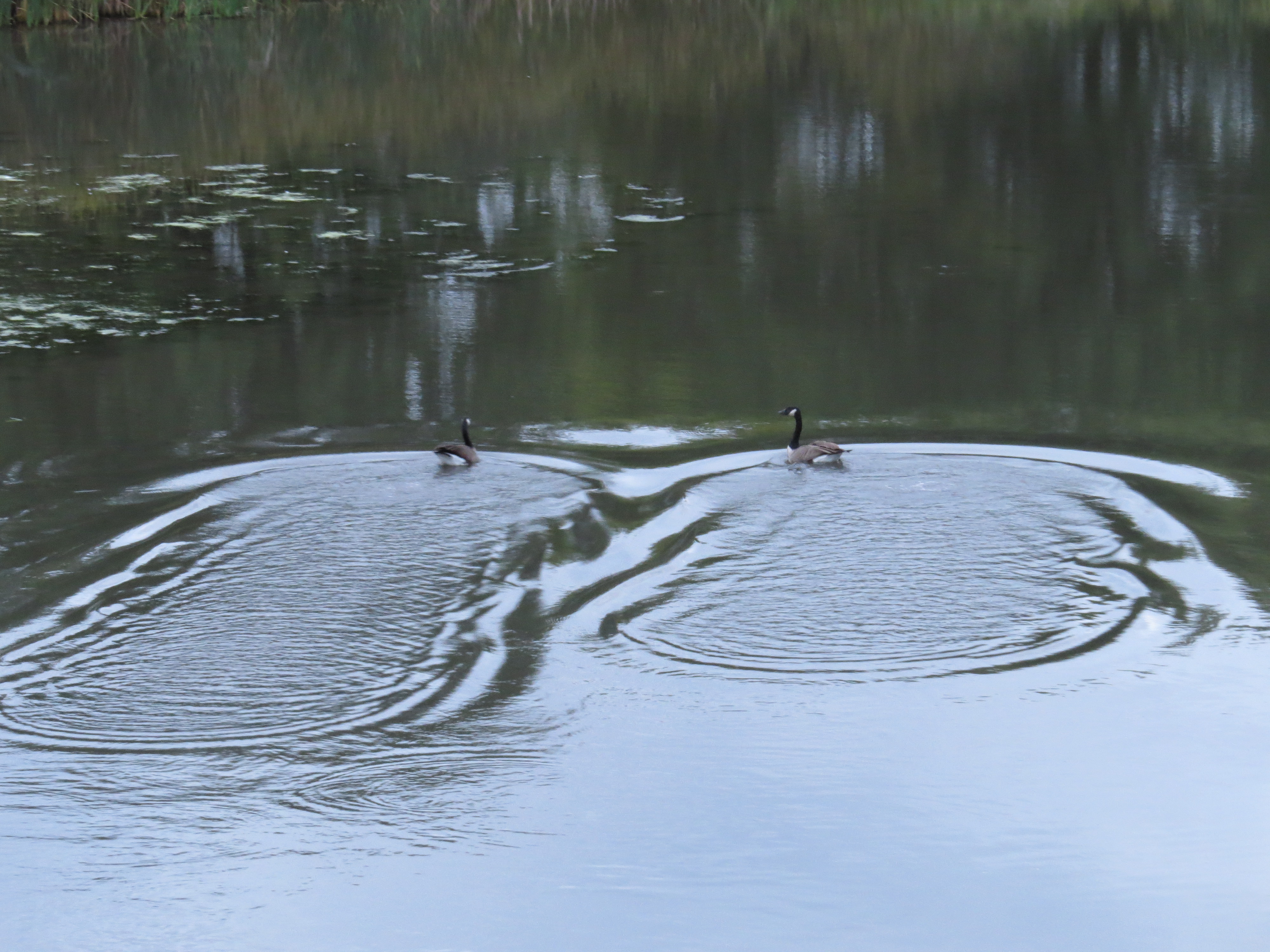
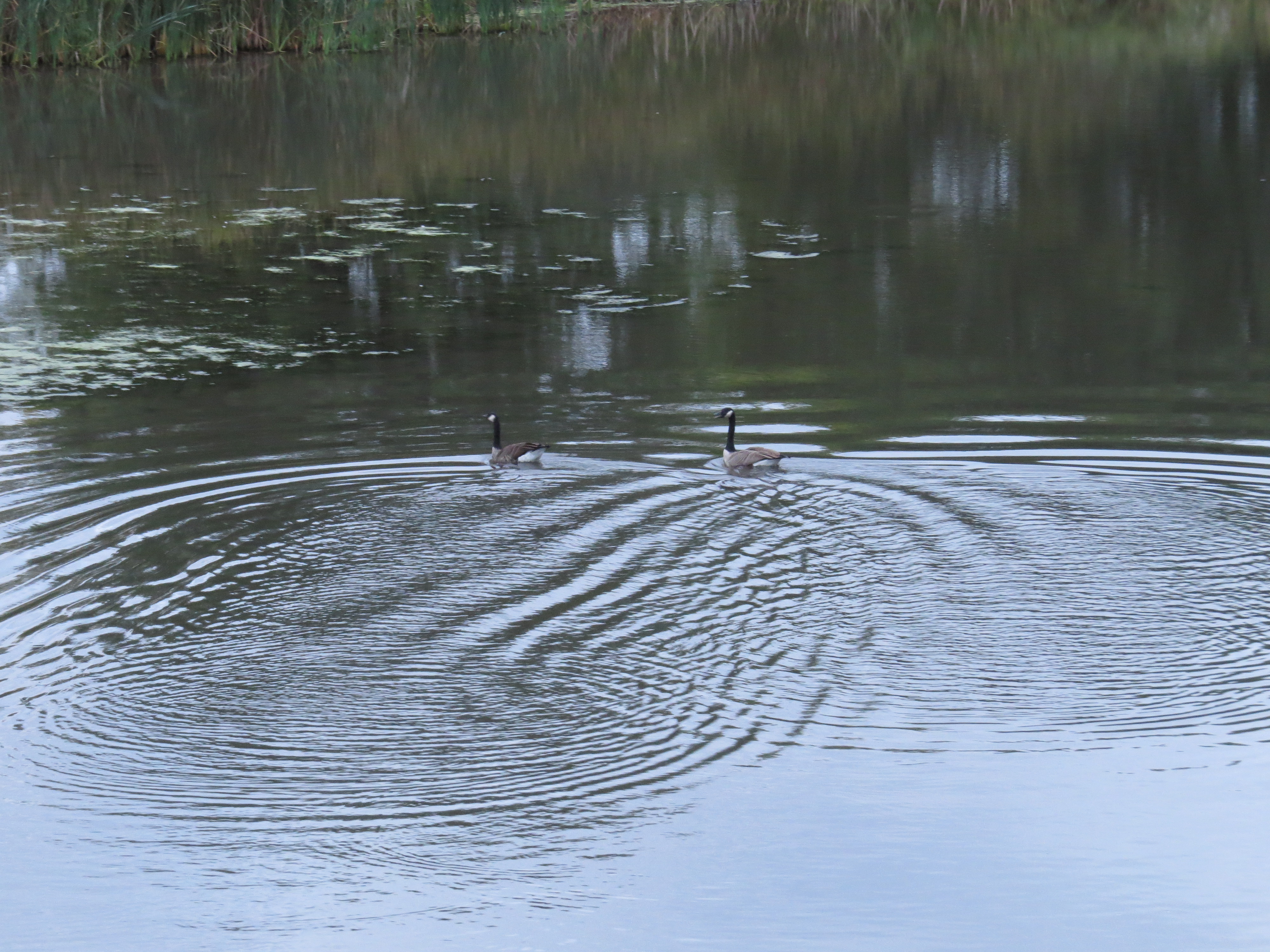
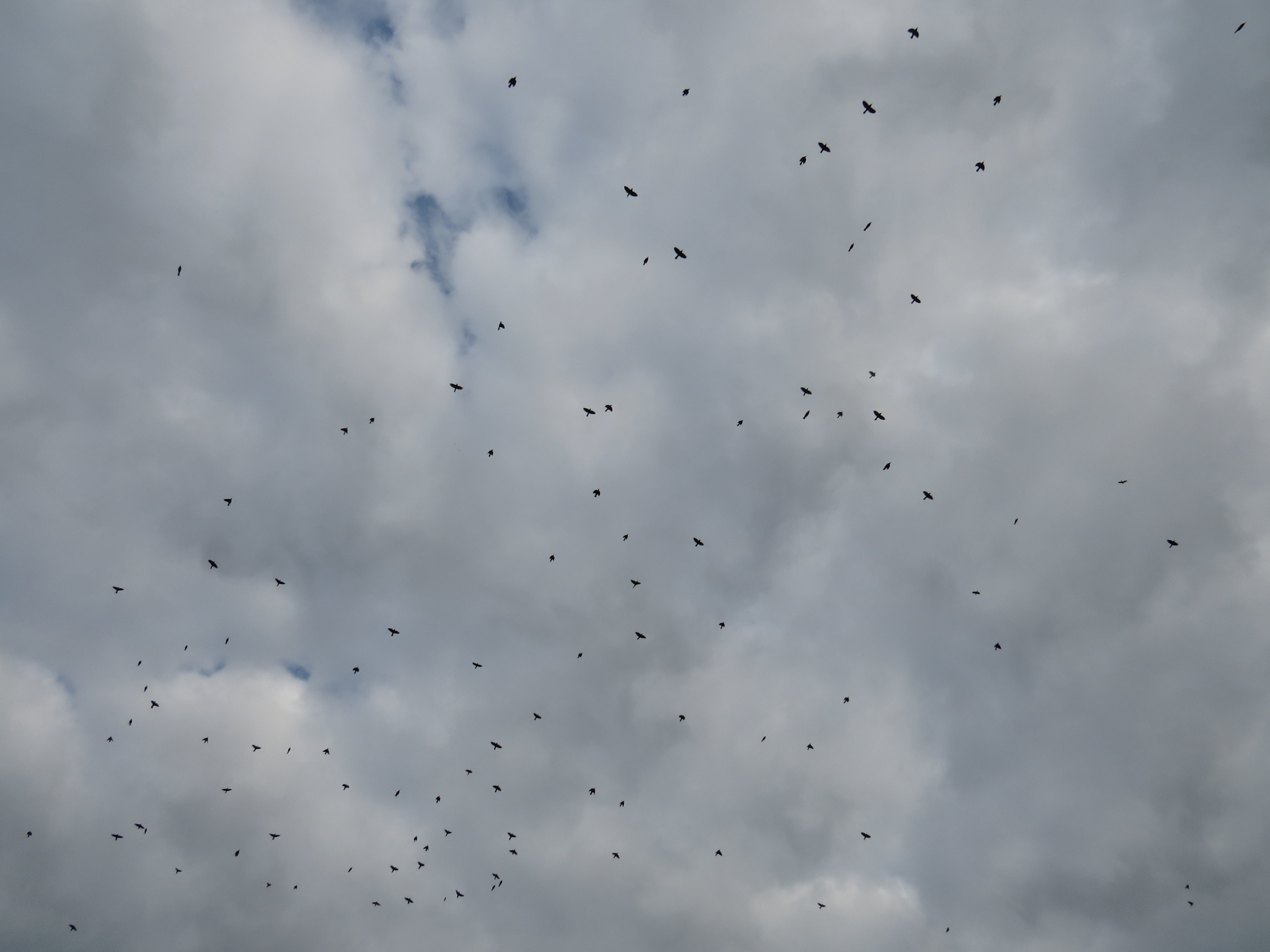
We cooked breakfast and readied ourselves for hiking. We planned to go on Mound Trail, described as one long, gradual hill—1.5 miles one way. It followed the fence line that enclosed the bison, so we were hoping to see them again. The mowed grass trail was easy to walk on, and as described, the slope was gentle. The tallgrass prairie had gone to seed—the grasses, most of the flowers, and the weeds. Whenever we turned around, we marveled at how far we could see, and then realized we weren’t even close to the top of the Mound.
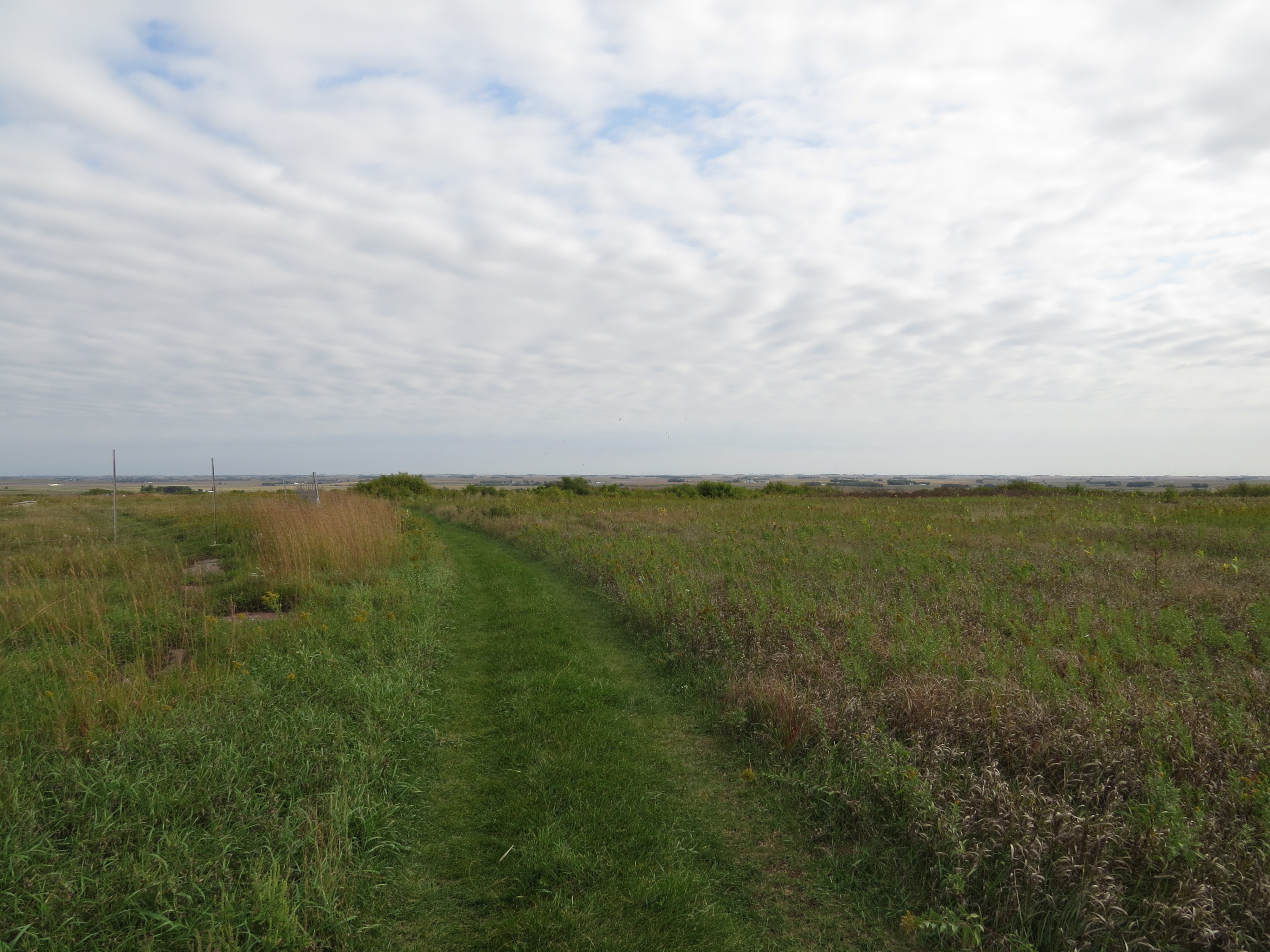
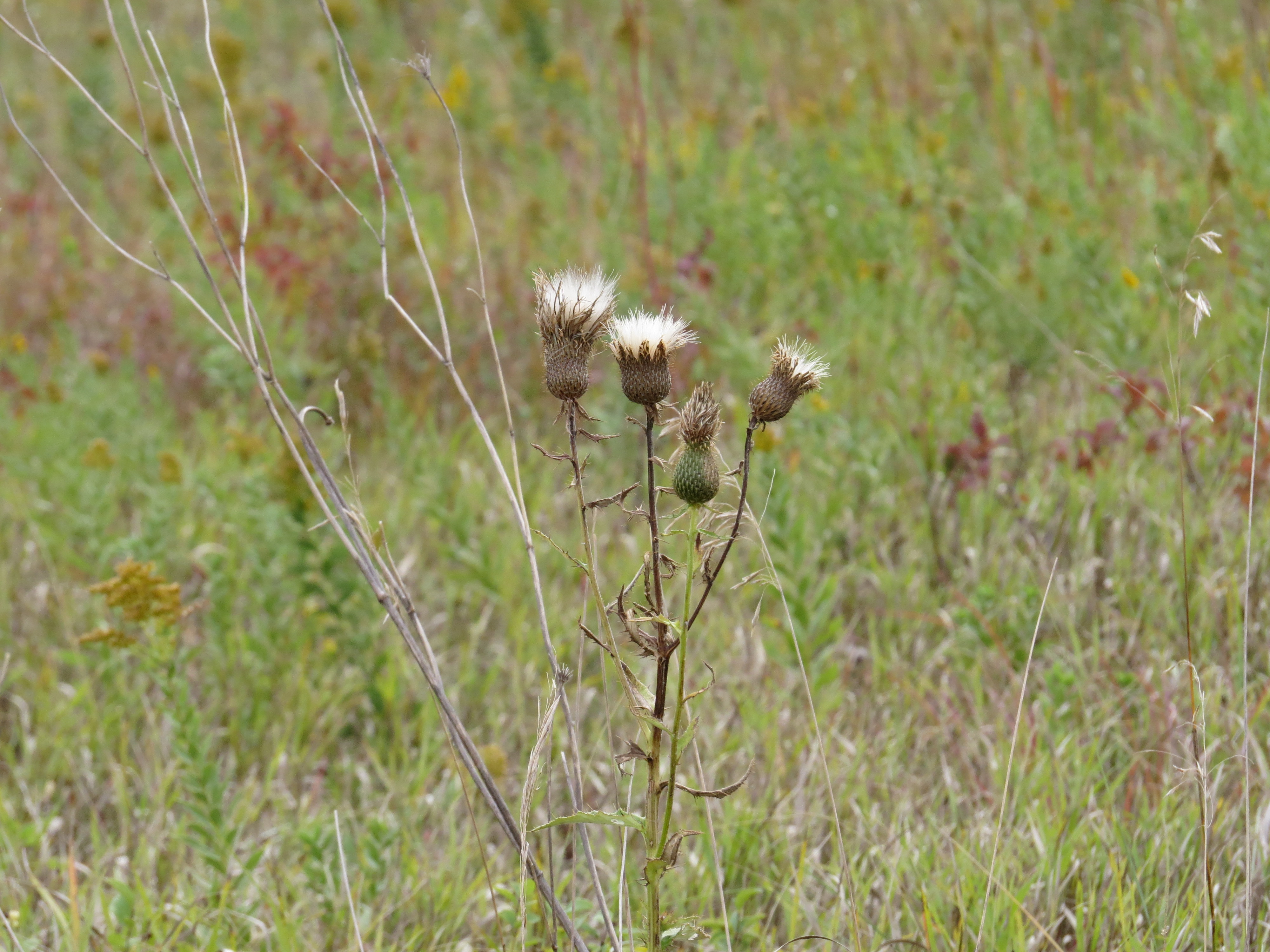
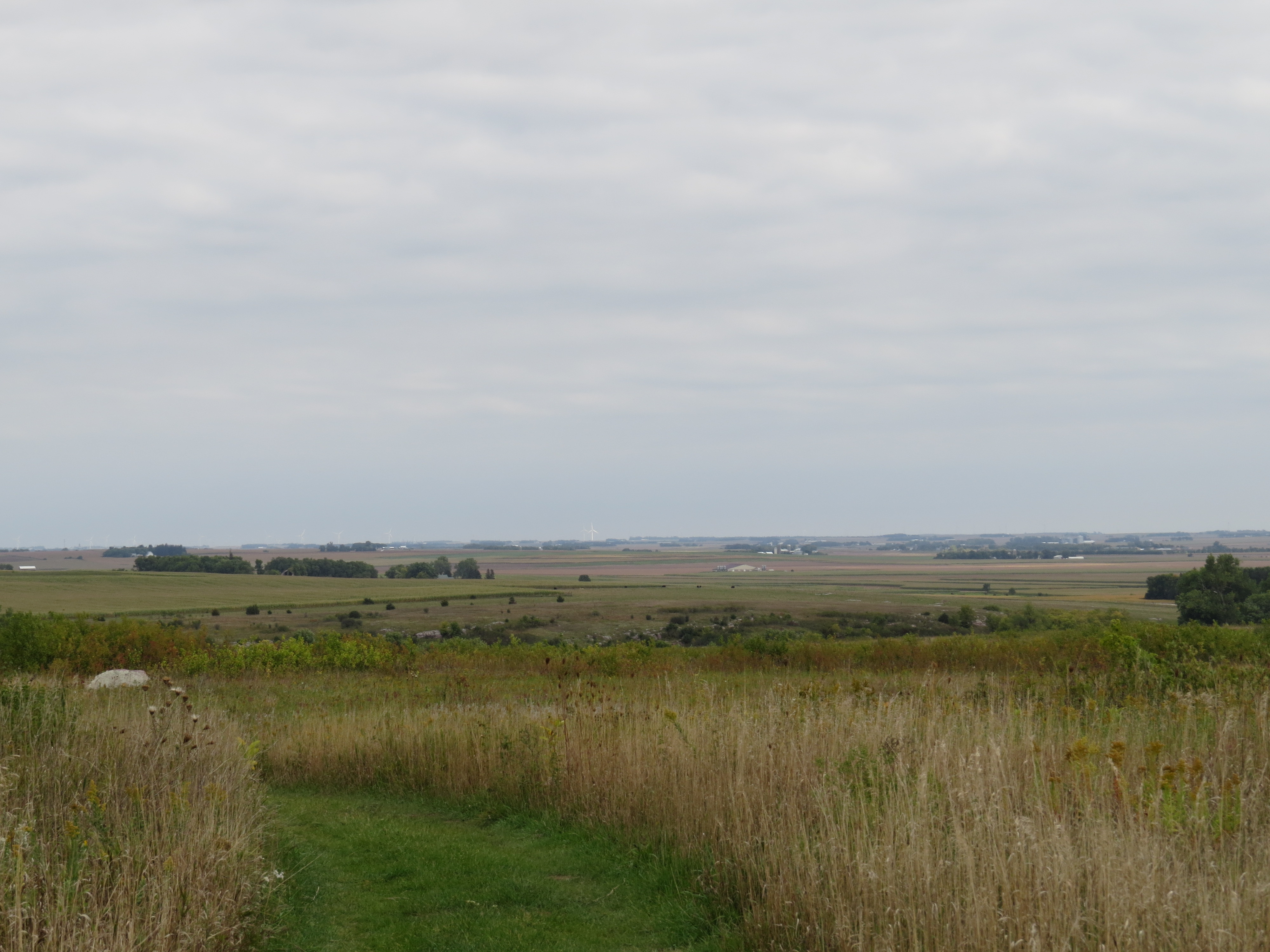
At some point up the trail we encountered a small group of Bison mamas and babies just basking in the sunlight. Sprays of purple Asters and an occasional Sunflower bloomed in the prairie grasses. Prickly Pear Cacti were scattered throughout the Mound prairie, most often by the boulders that protruded from the ground where the soil was thin and heat from the rocks provided them a desert-like environment. At this time of year, the red fruits of the cacti contrasted from the green paddles and the long, white, needle-like spines.
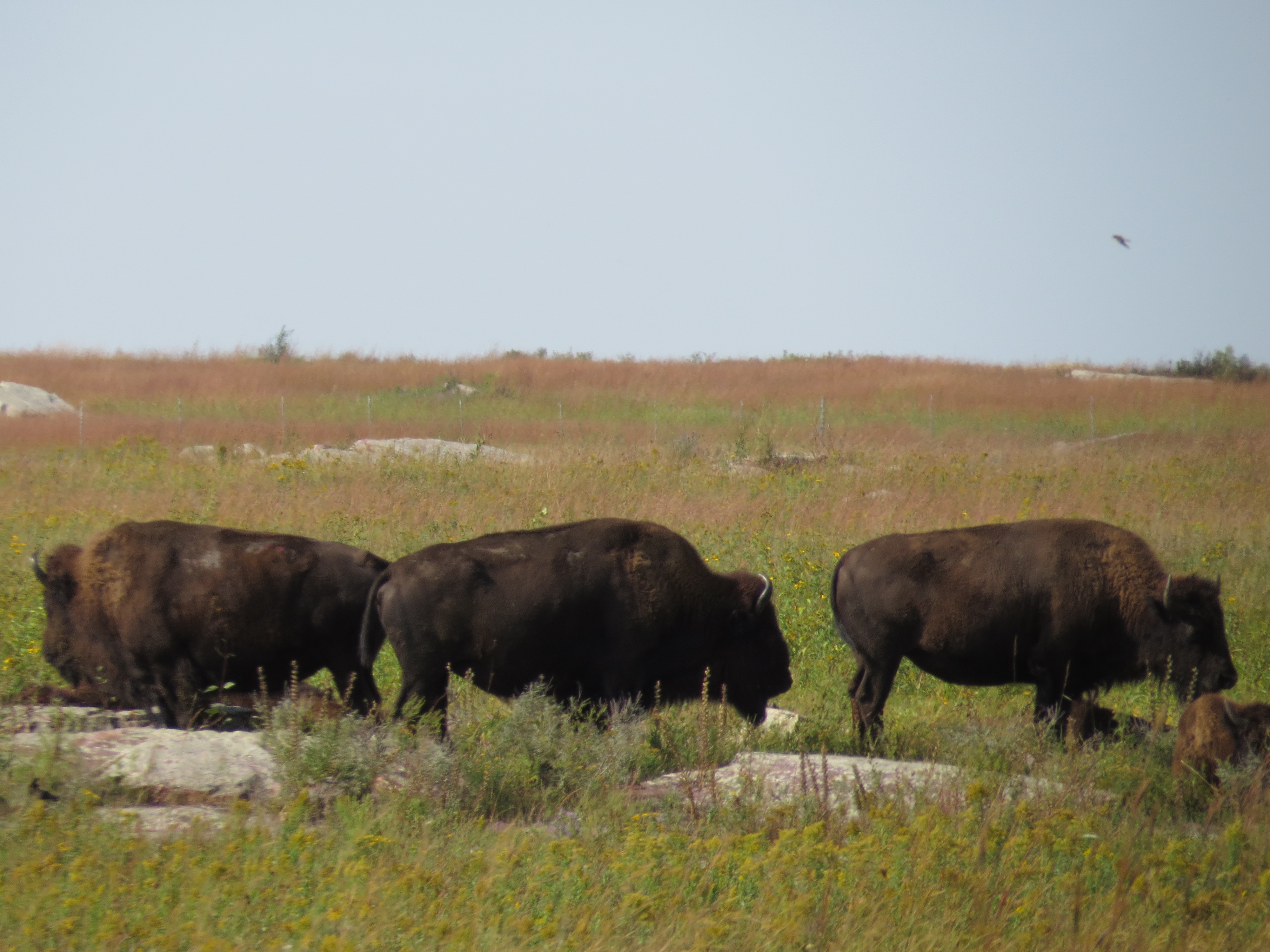
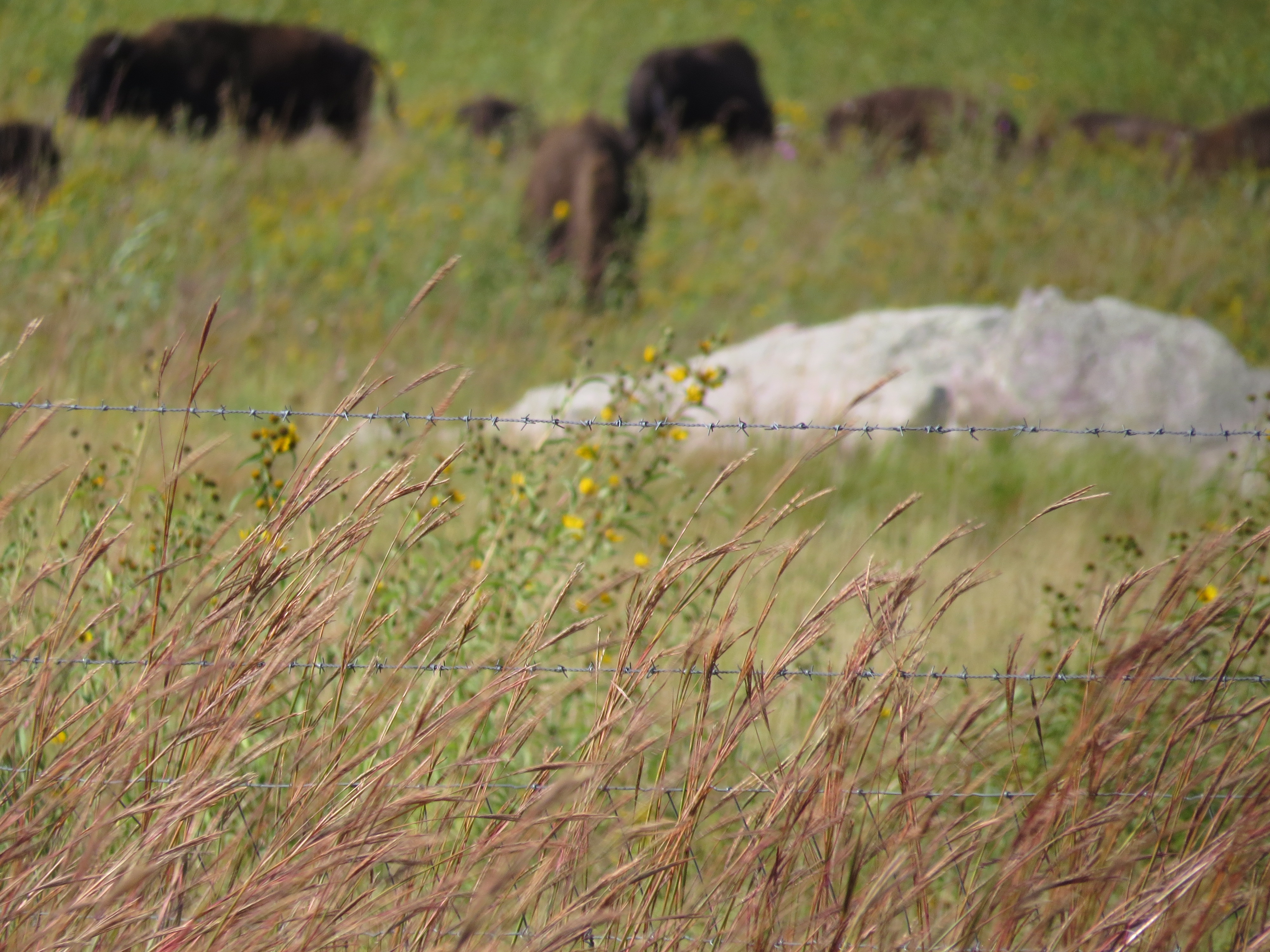
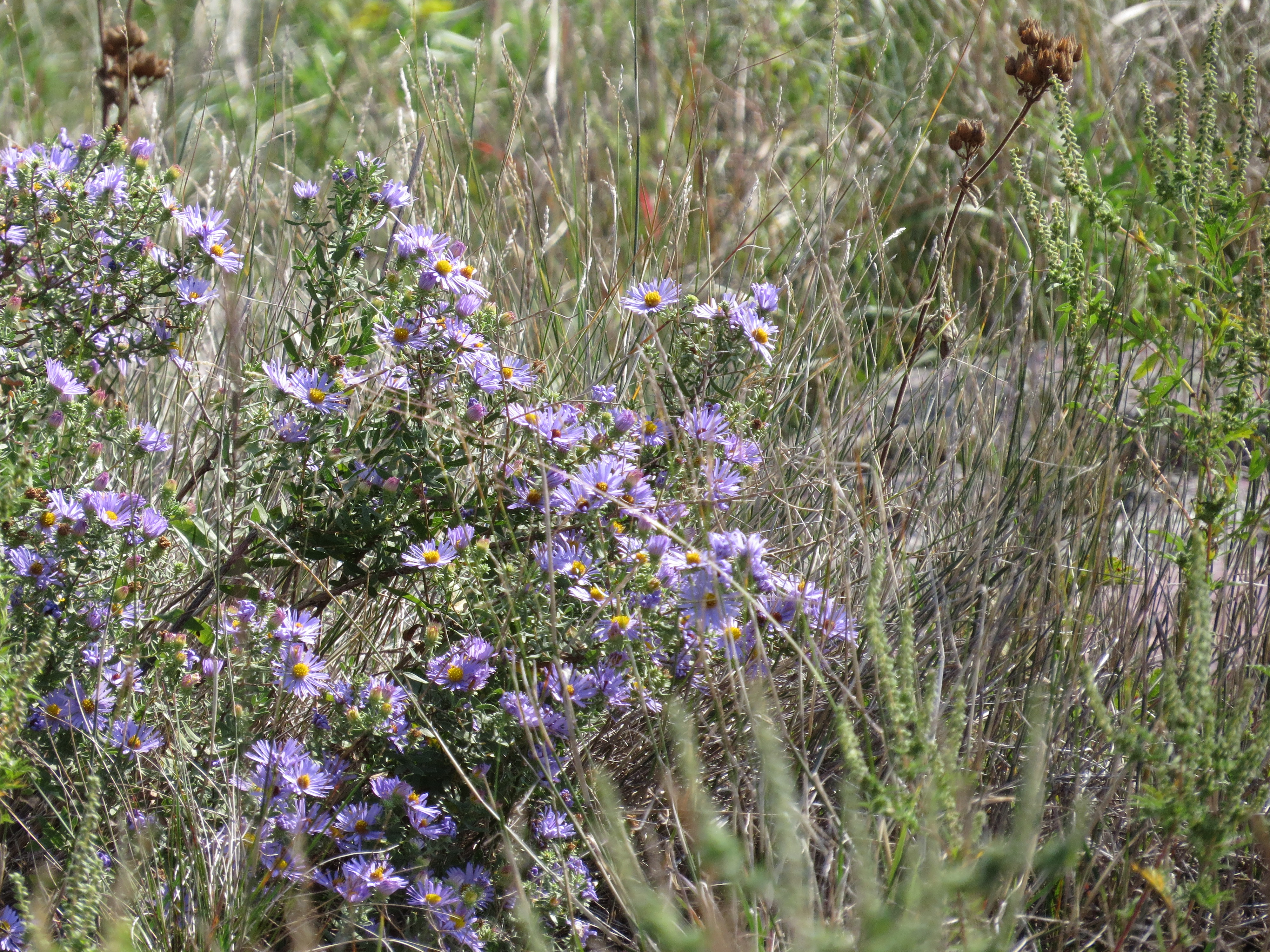
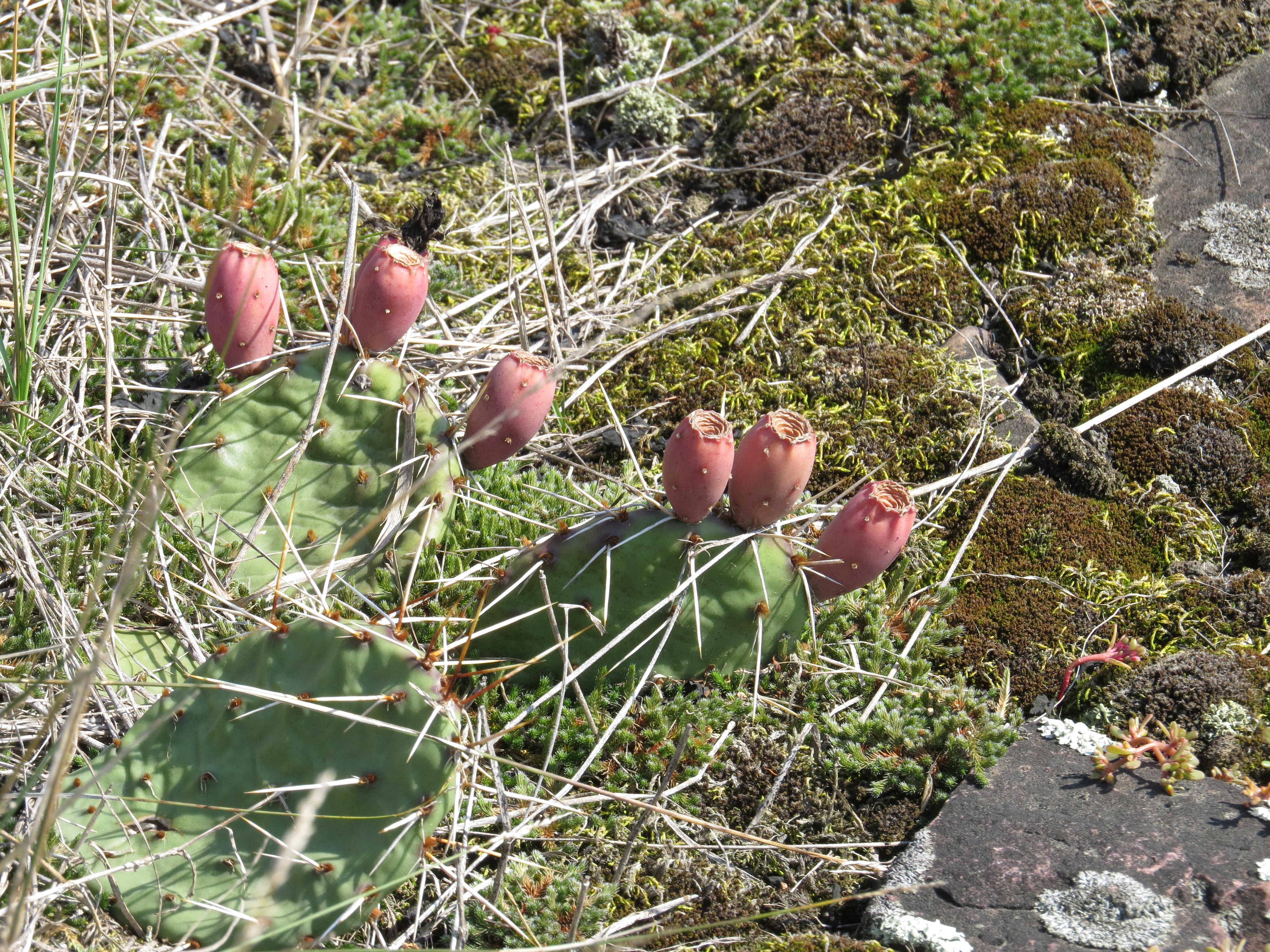
At the top of the Mound by a landmark boulder called Eagle Rock, we had a full 360 degree view of the surrounding terra. Adventurer, lawyer, and painter George Catlin, on his journey to the nearby Pipestone quarry in 1836 wrote:
“There is not a tree or bush to be seen. The eye may range east and west to a boundless extent over a surface covered with grass. The grass is green at one’s feet but changes to blue in the distance like the blue and vastness of the ocean. Man feels here, the thrilling sensation of unlimited freedom.”
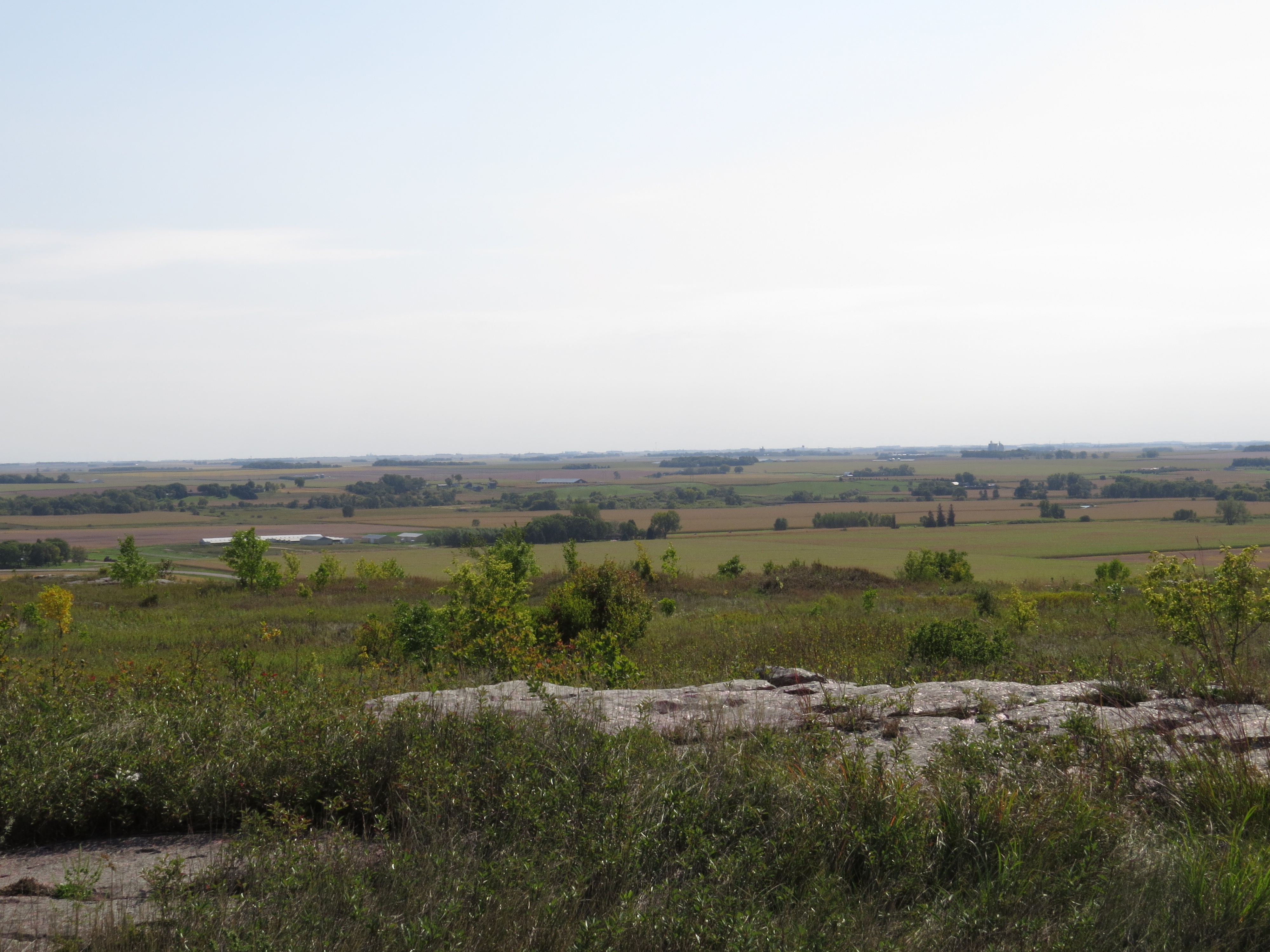
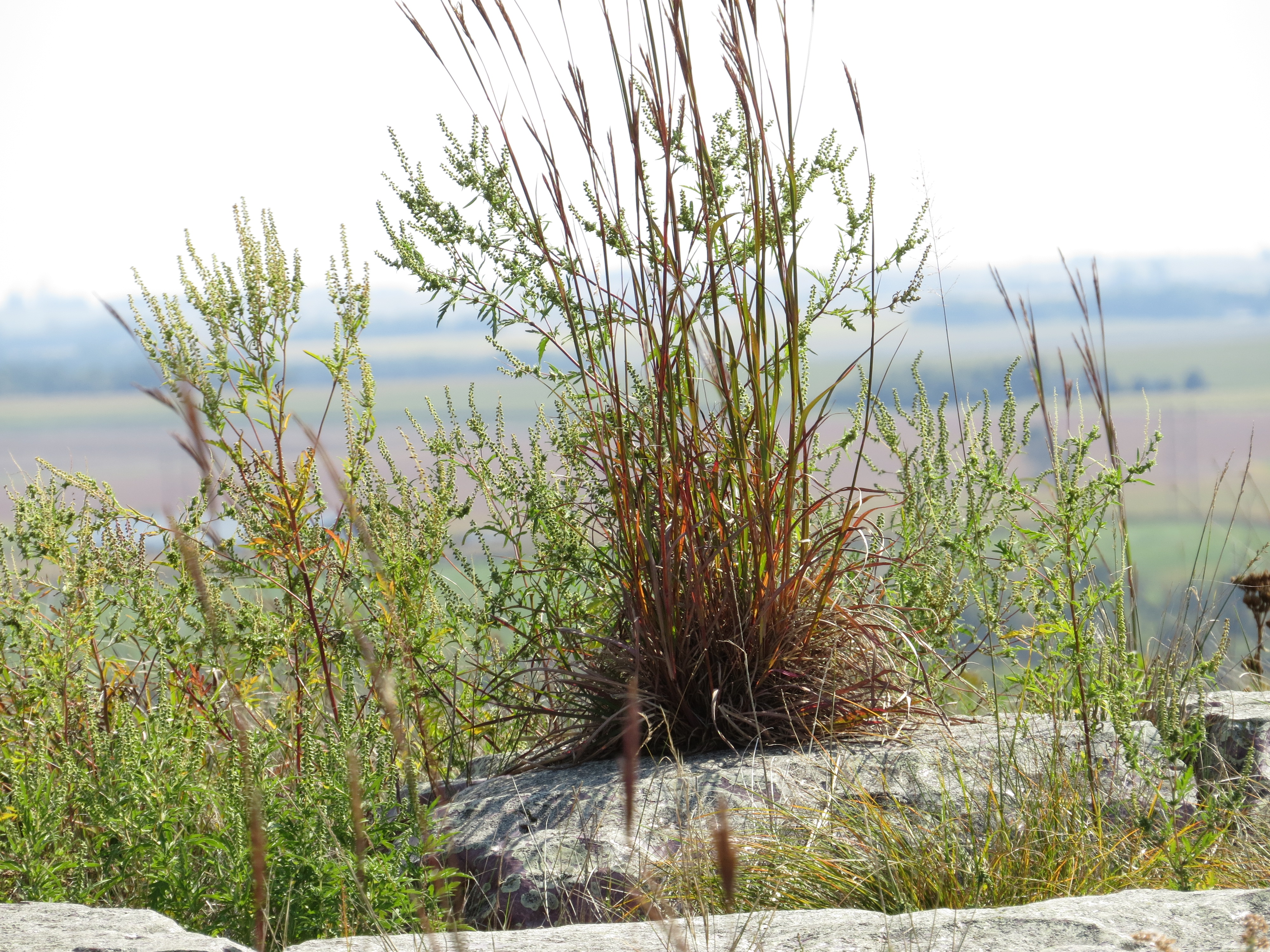
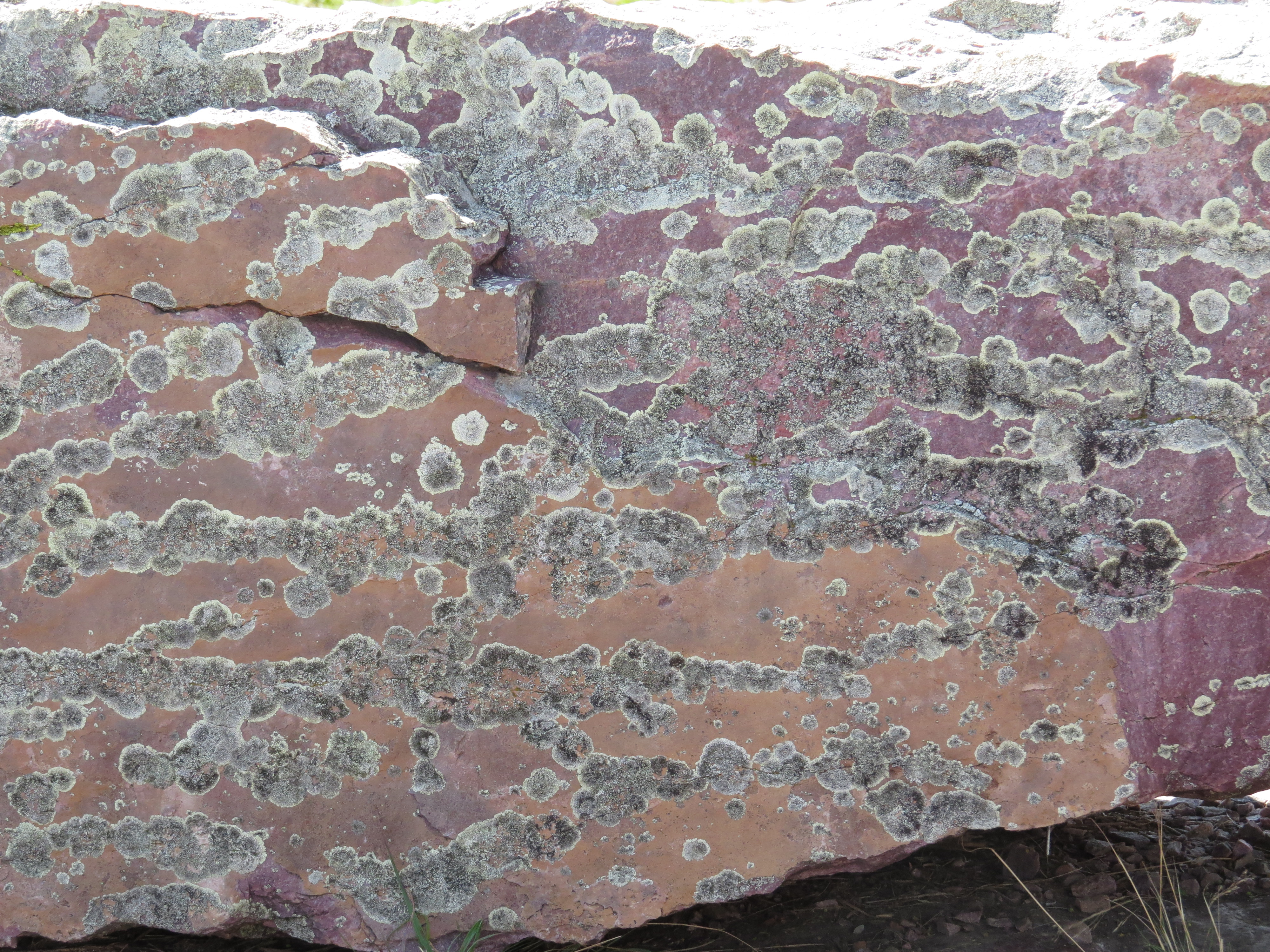
From Eagle Rock, it was a short hike down to the former home of Frederick Manfred, author of many books, including Lord Grizzly (made into the movie ‘The Revenant.’) The home and surrounding land was purchased in 1972 by Minnesota State Parks and transformed into the interpretive center (now closed due to structural problems) and Blue Mounds State Park.
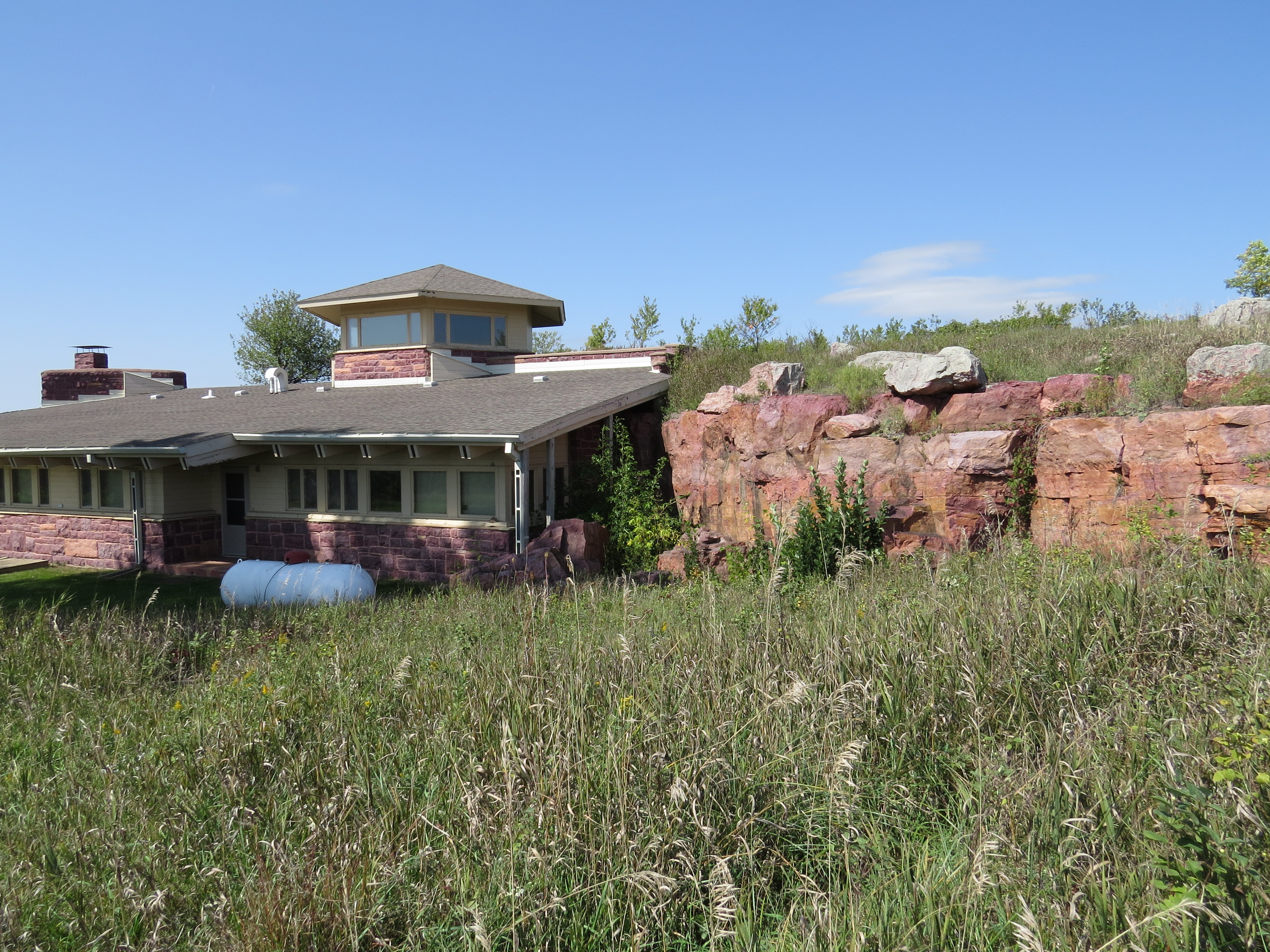
The rock used on Manfred’s home was salvaged from the first school built in 1897 in Luverne that had been originally quarried from this historic red rock quarry. The old quarry site is available to climbers, one of whom we talked to who had just free-climbed the steep wall. Meanwhile, my knees got weak as I inched towards the edge and looked down at the beautiful red rock.
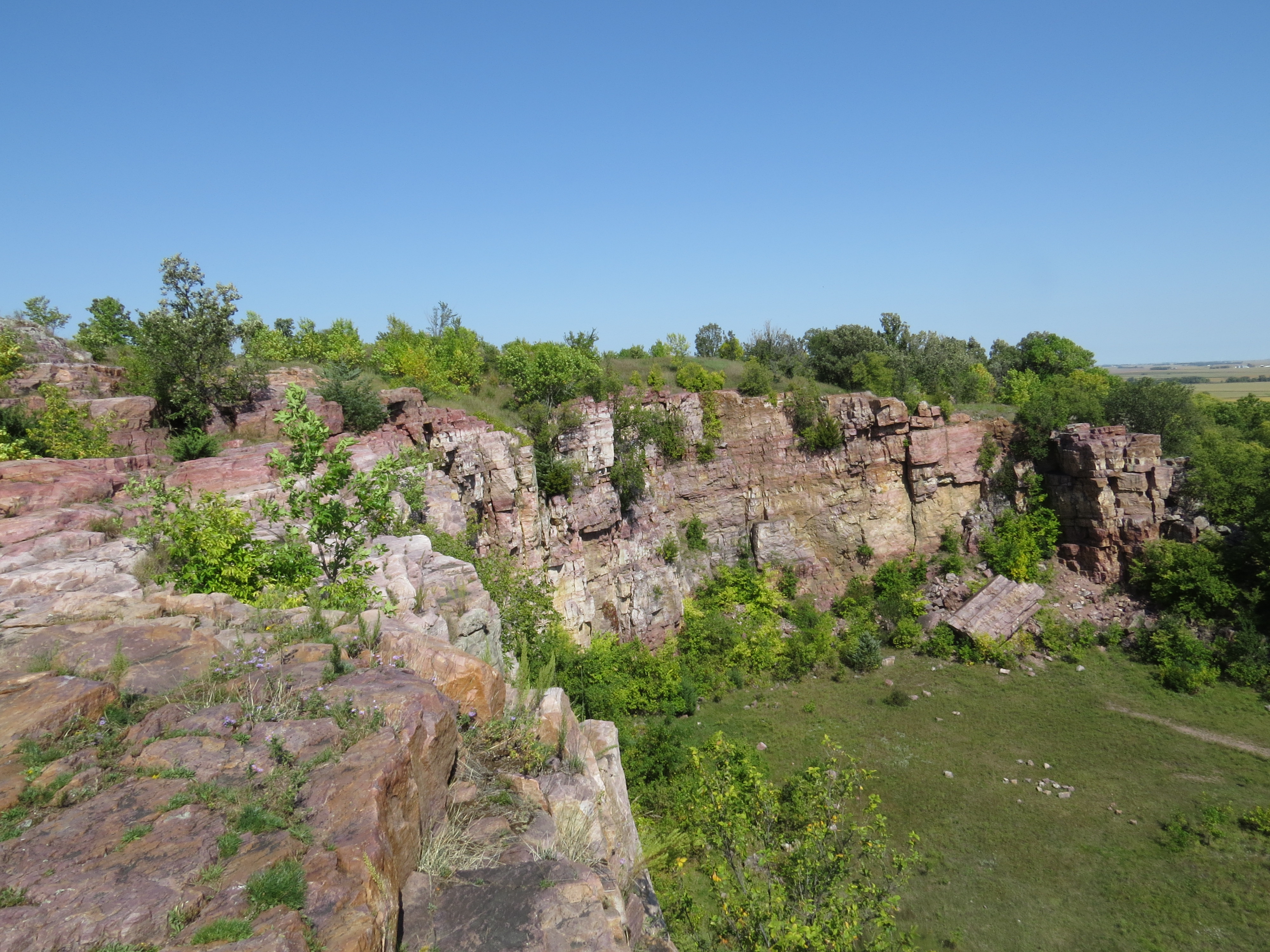
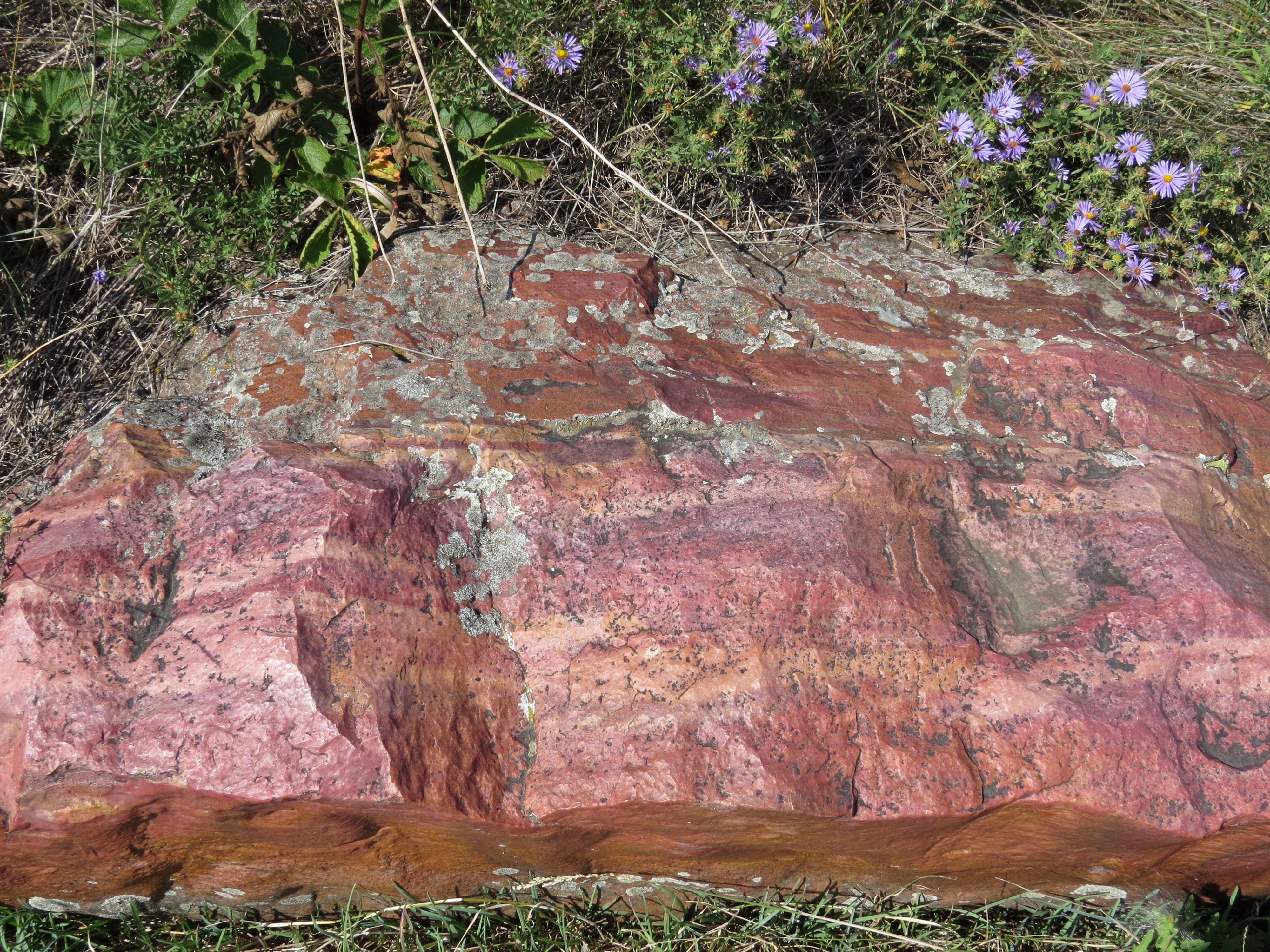
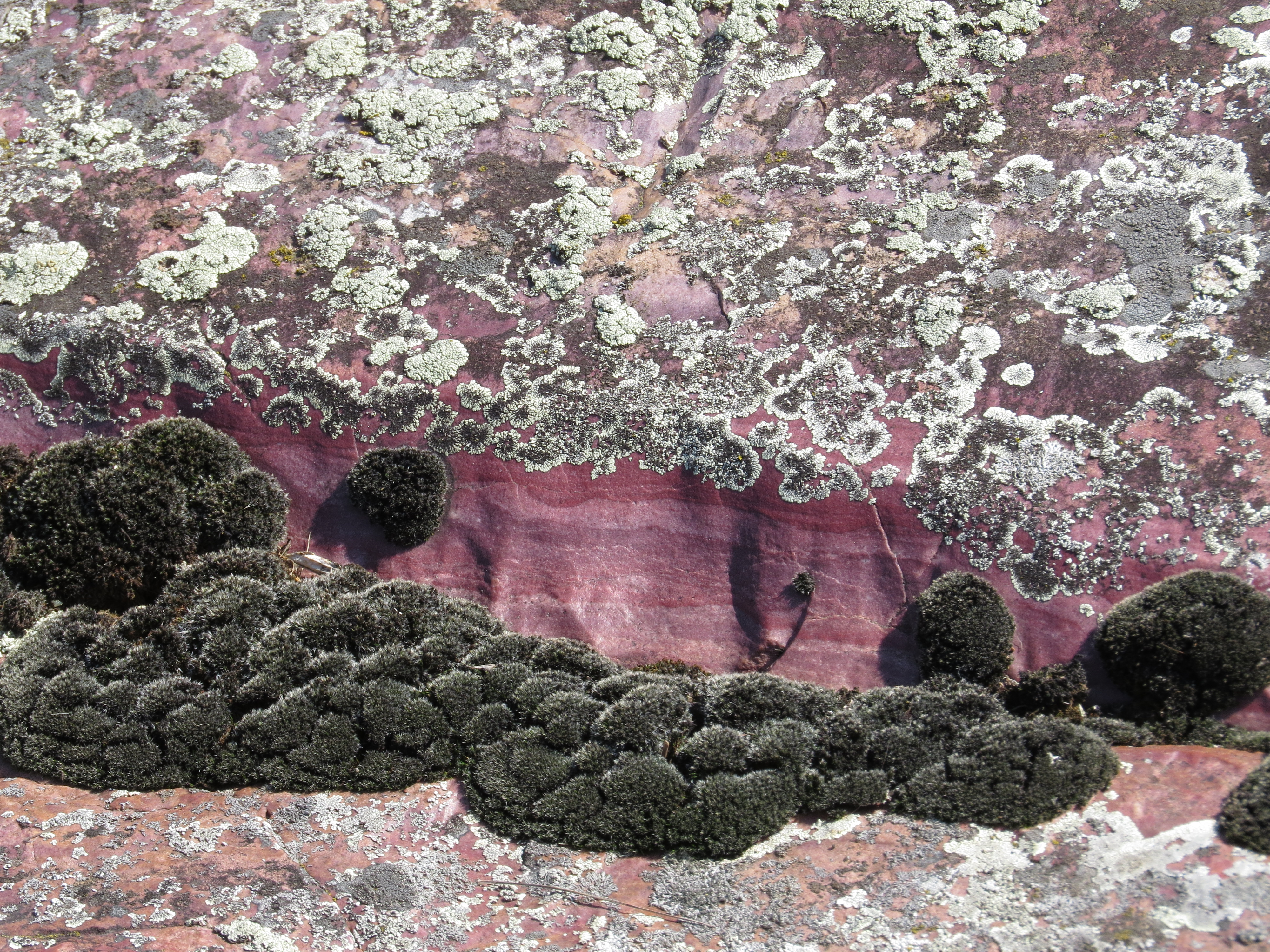
We had 1.5 miles to return to the trailhead on the Upper Cliffline trail loop that passed by the quarry. And here I want to give kudos to my Mom, whose almost-mid-80’s birthday we were celebrating. It was a warm, sunny day for this substantial and interesting hike, and she kept up with us ‘young-uns.’ Young and old are such relative terms—weeks ago we were the ‘old ones’ with our kids in the BWCA, and now we were the young ones. My Mom is an inspiration—I hope I’m still hiking and exploring when I’m her age.
Back at our campsite, we rested, built a fire, and assembled our ‘hobo dinners’ of ground beef raised on my Mom’s pasture land, potatoes and onions dug from her garden, and carrots I bought and cut up–lol. We wrapped it all in foil and threw them on the red hot coals. A delicious dinner in fifty minutes along with a tomato and cucumber salad from her garden! She is still a woman of the land—my terra-mother.
At evening sunset time, the resident heron was standing in a golden pool of water—aqua gold—stealthily placing one foot in front of the other for some late-day fishing. The blackbirds were once again noisily settling into their cattail shelters. And as darkness fell, the moon reflected its golden light on the midnight blue water.
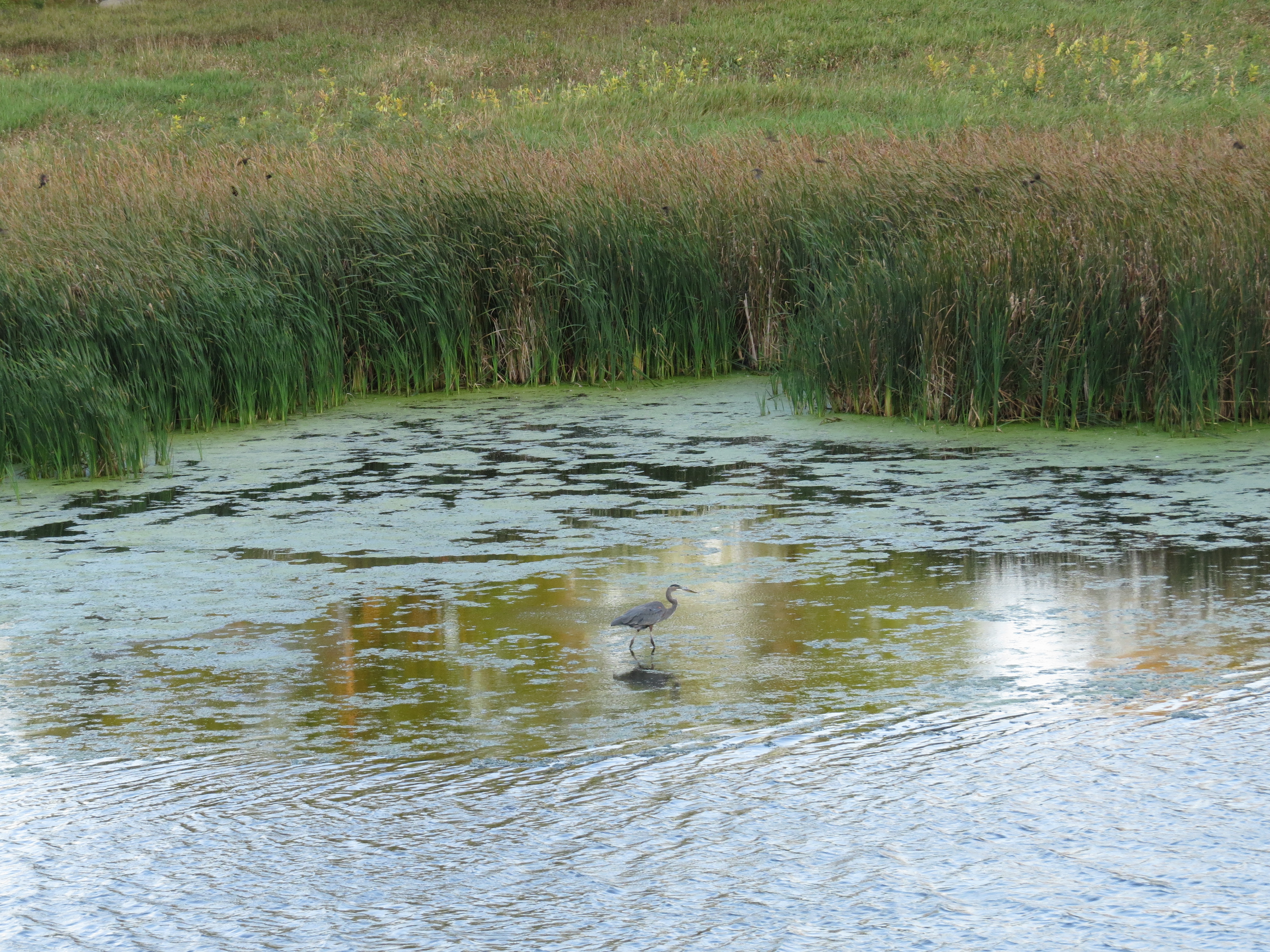
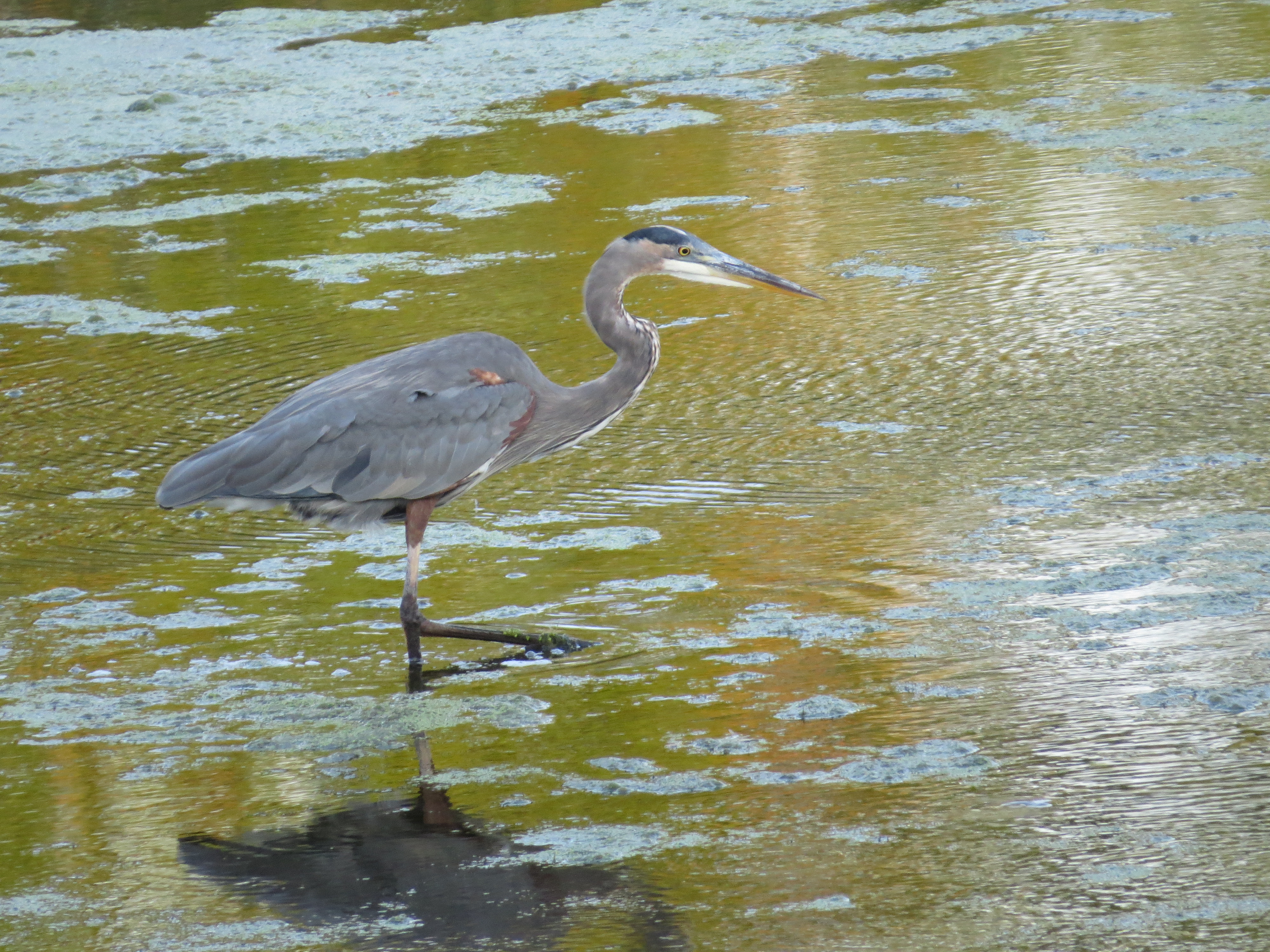
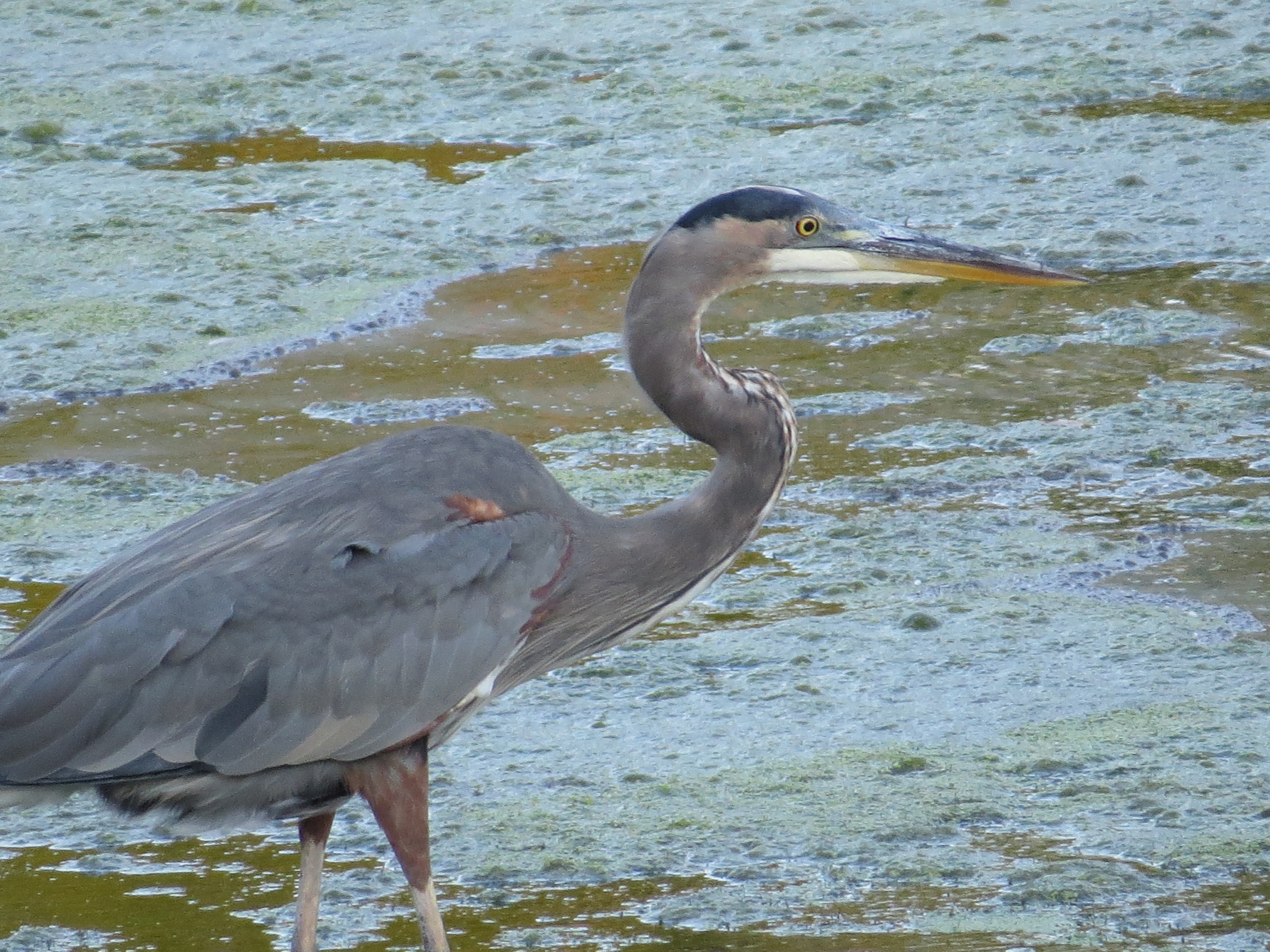
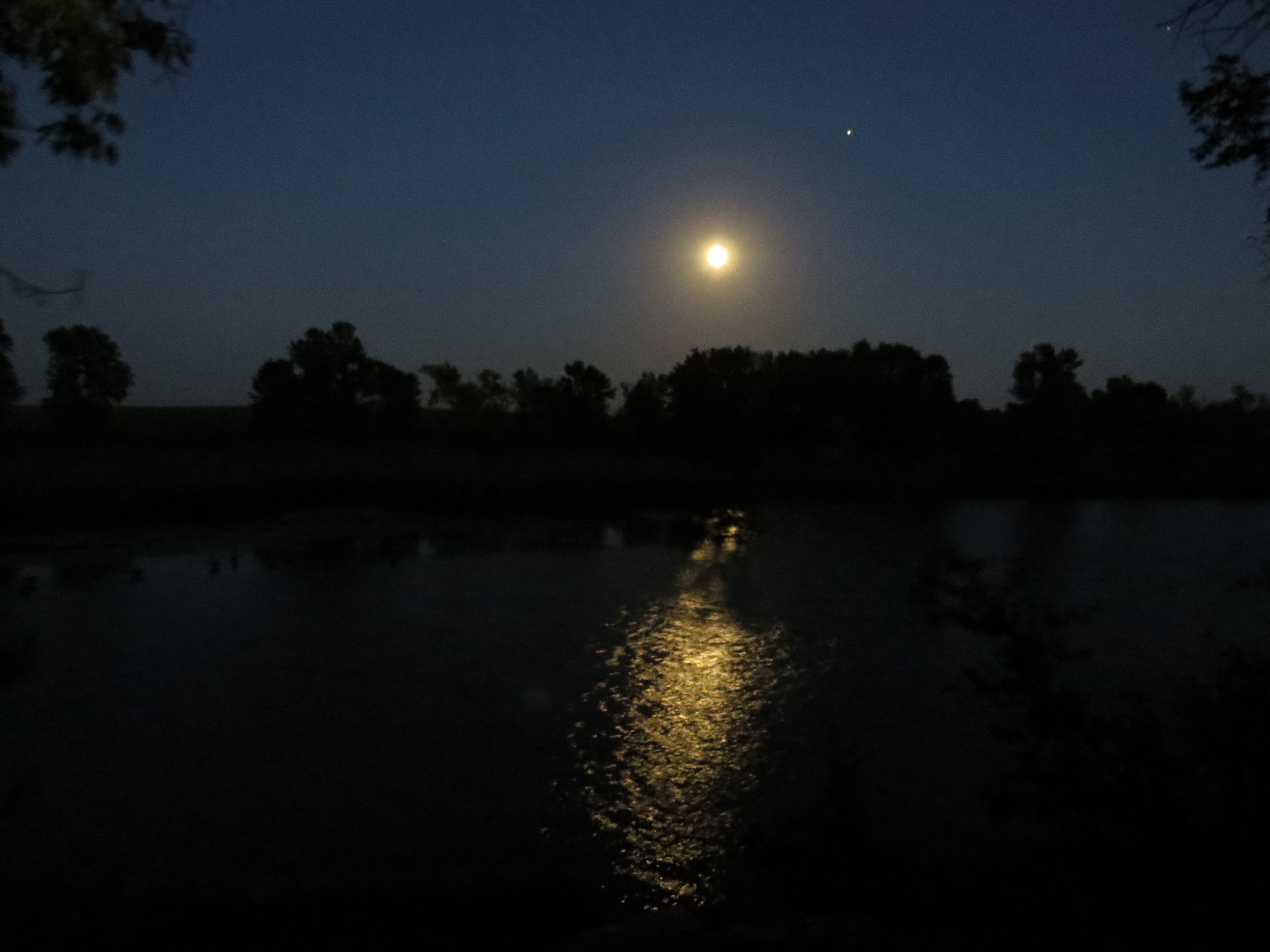
The next day, we added ‘aeris’ to our aqua and terra—the air or atmosphere. We hiked at nearby ‘Touch the Sky Prairie’, a joint venture between the Brandenburg Prairie Foundation and the U.S. Fish and Wildlife Service. Photographer Jim Brandenburg splits his time and love between the Northwoods forests around Ely and the southwestern prairies where he grew up. We had followed his path between these two places. I understand his divided love—the prairie never leaves you, and new places can take up residence in your heart.
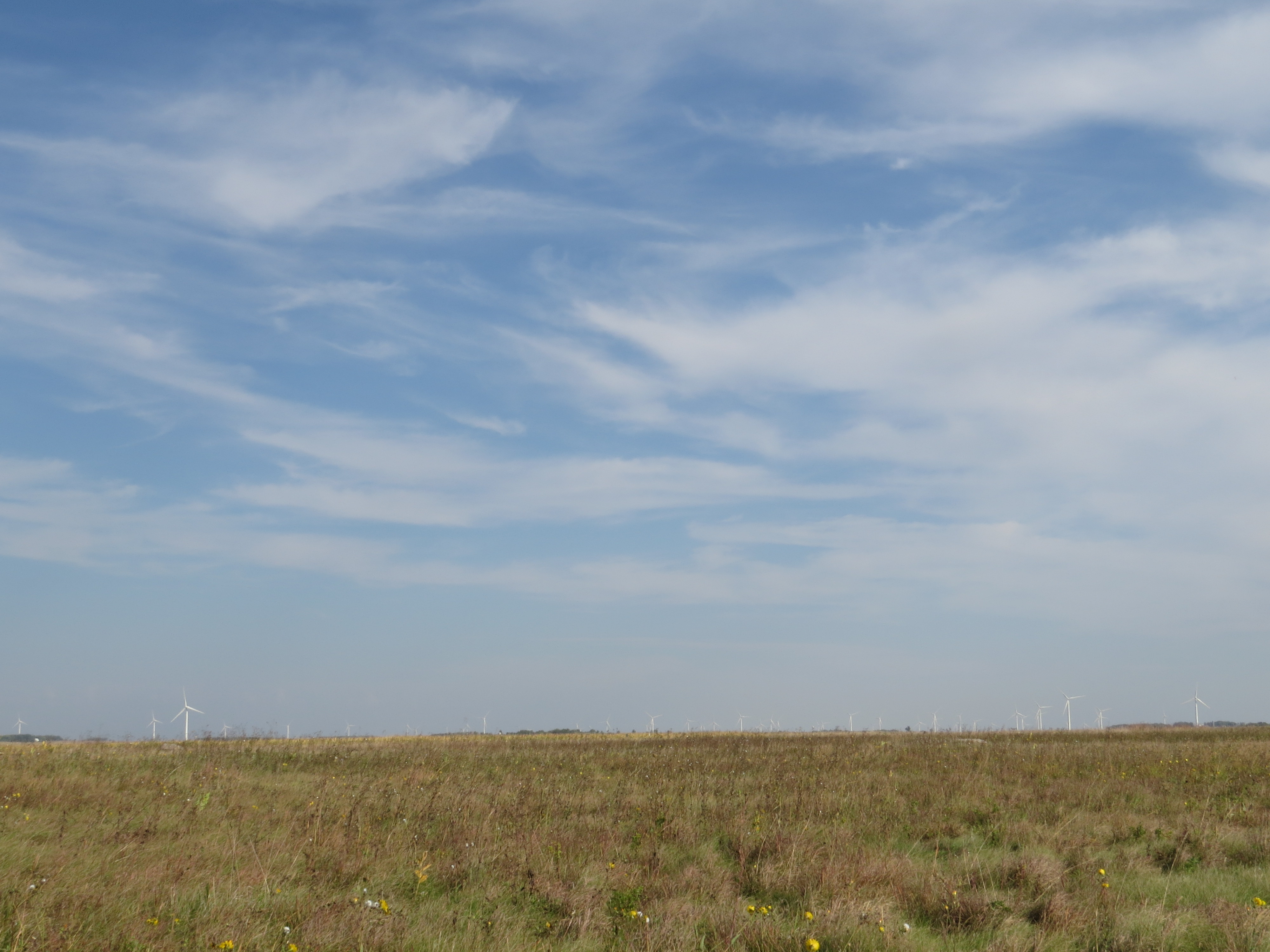
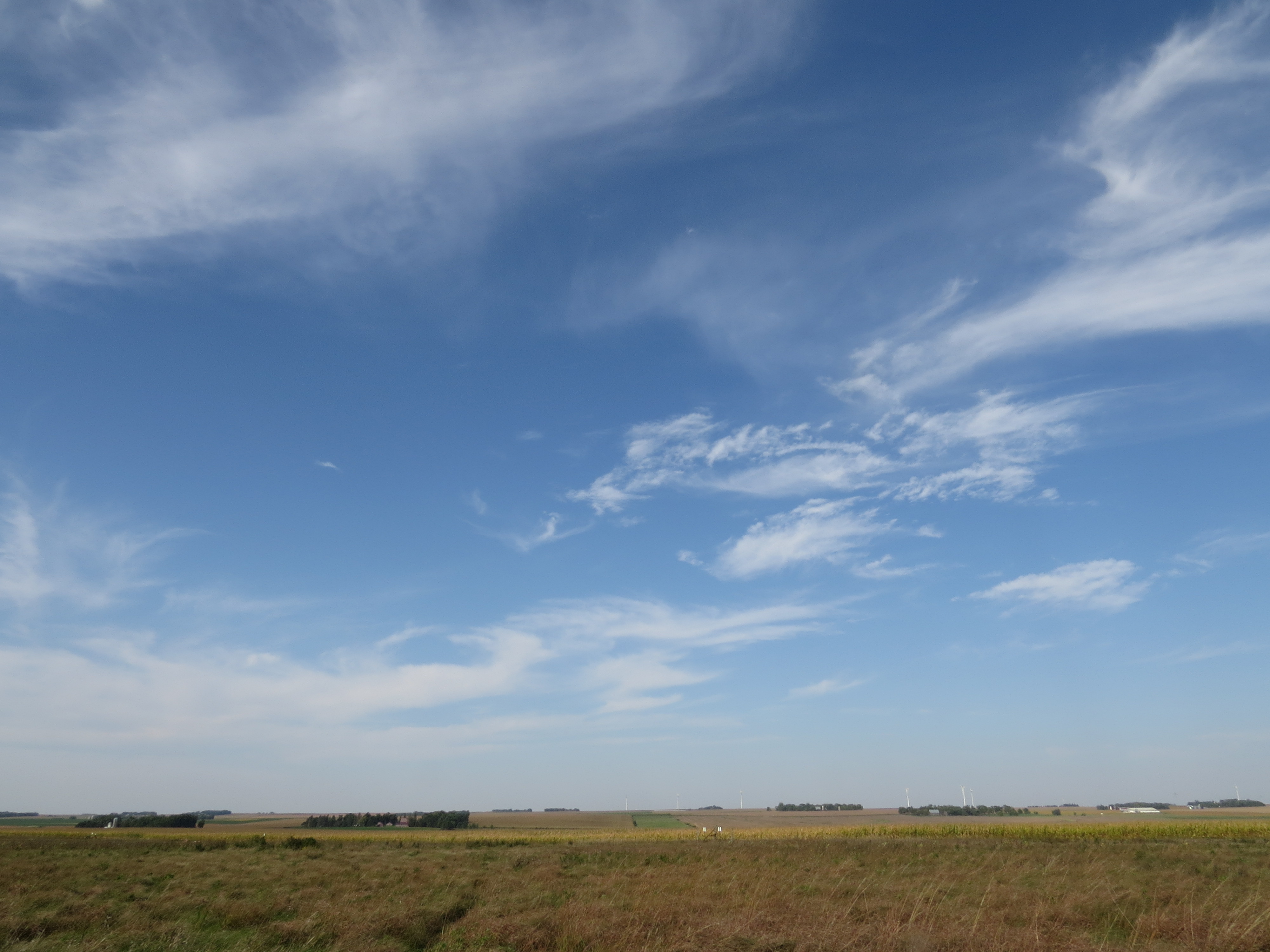
While I appreciate the water, I love the land, the earth, and I most specifically love the prairie. It is in my DNA and from my terra-nurturing Mom. The prairie allows a person to ‘see.’ Nothing gets in the way. The prairie holds the water, allows it to flow, and meets the aeris with humbleness. It showcases the large bodies of animals, colorful wildflowers, boulders of geological wonder, and a magnificent sky. The tallgrass prairie has diminished to a small percentage of the land since George Catlin wrote about its ocean-like qualities—fields and trees have replaced the waving grasses. Visiting these historic prairie vistas, with bison and purple asters, reminds me of the ripples generated by one person’s life and choices and how those ripples merge, interact, and combine into one entity. The terra-earth is all of our homes, the aqua-water sustains each one of us, and the aeris-air gives us life. It’s a thrilling sensation.
